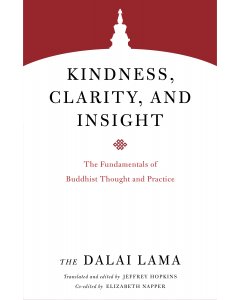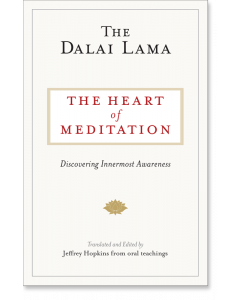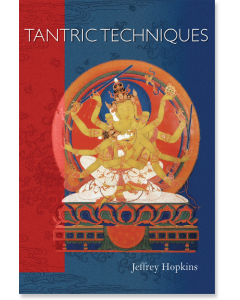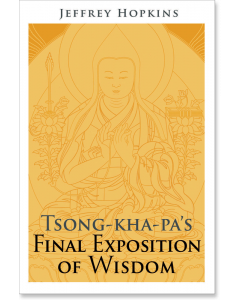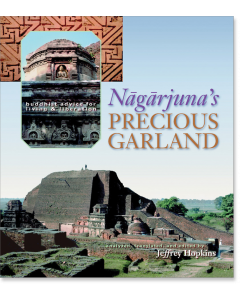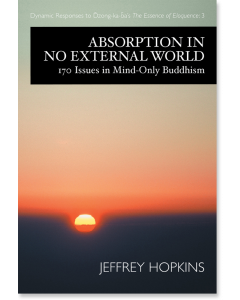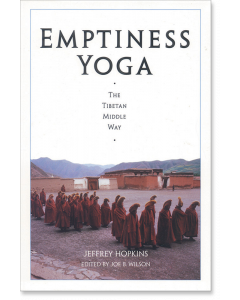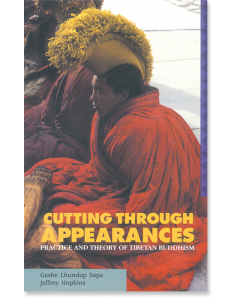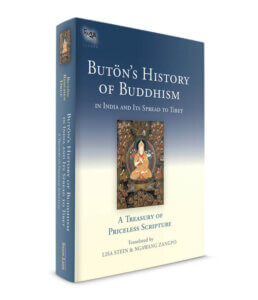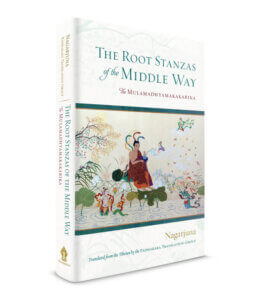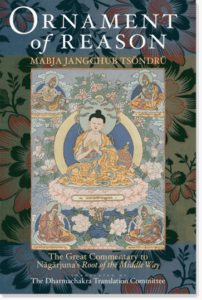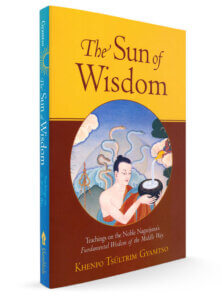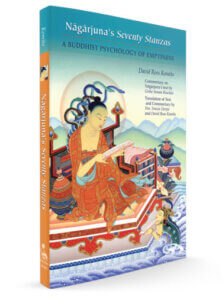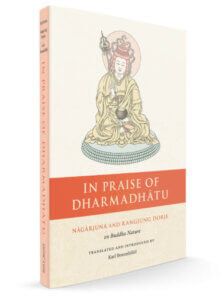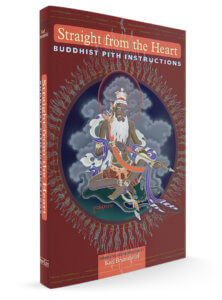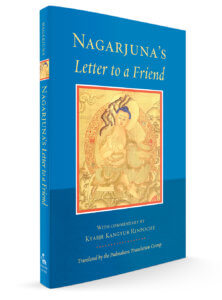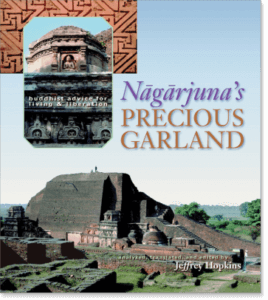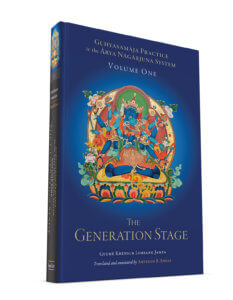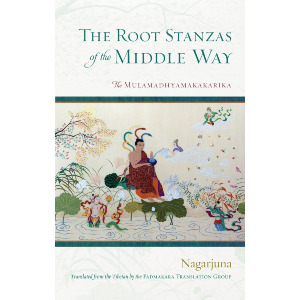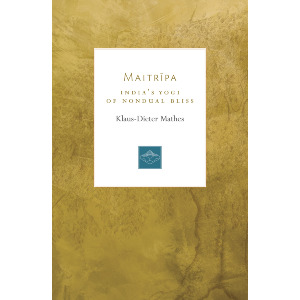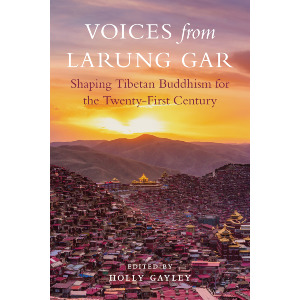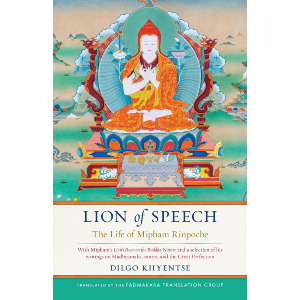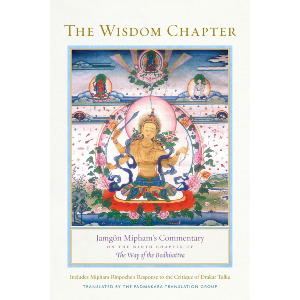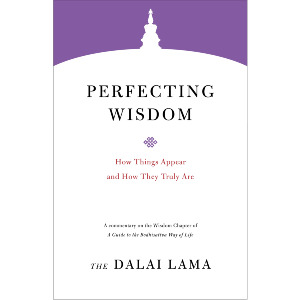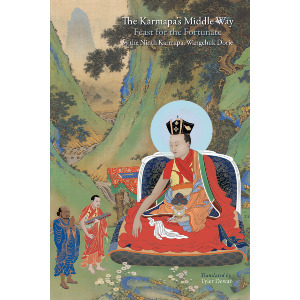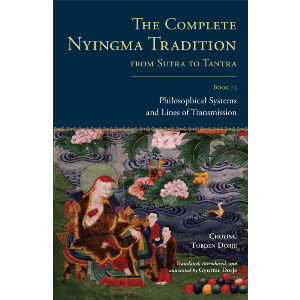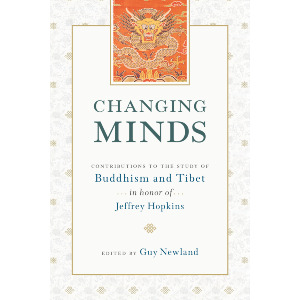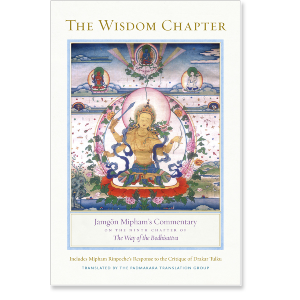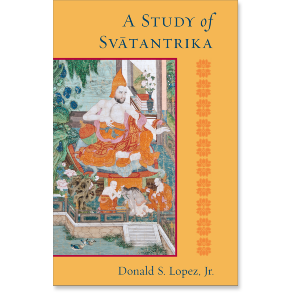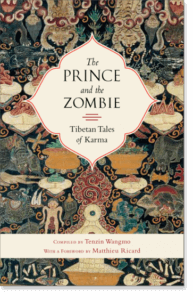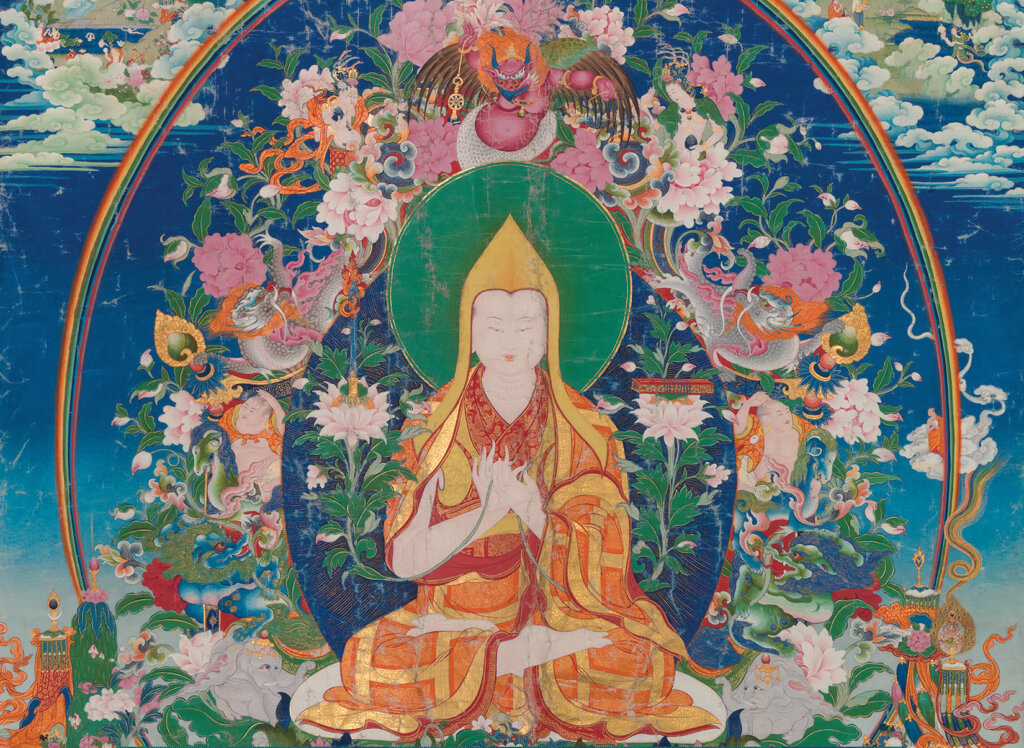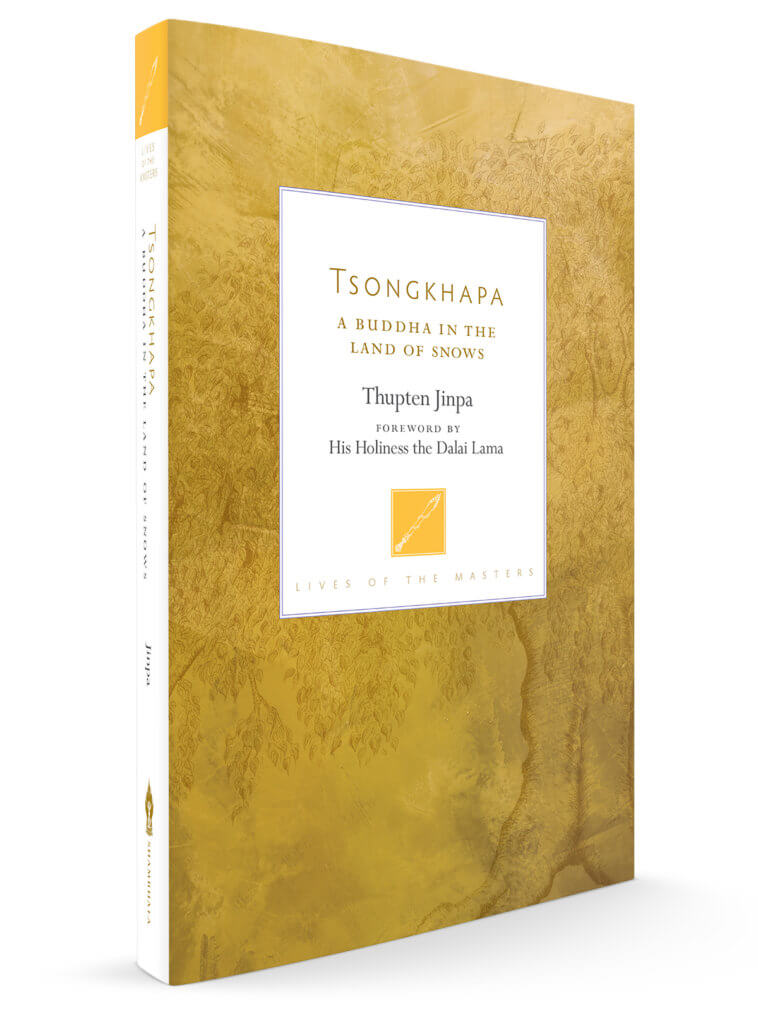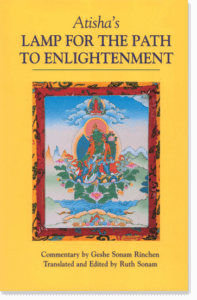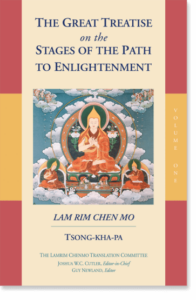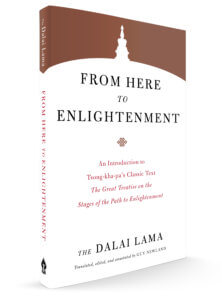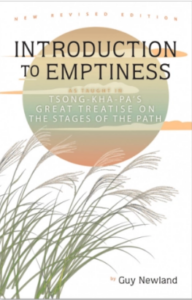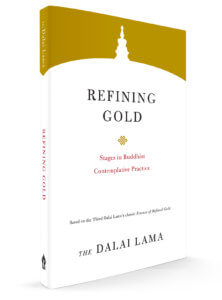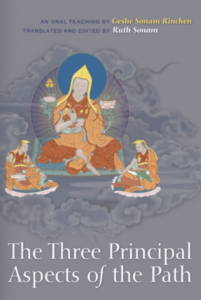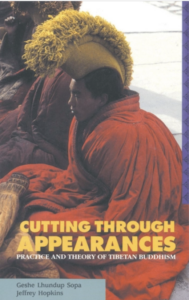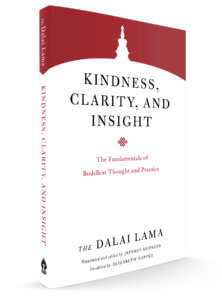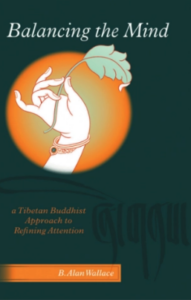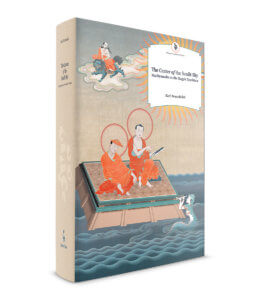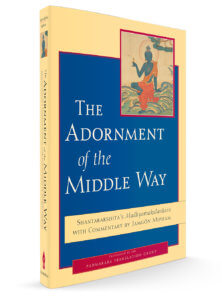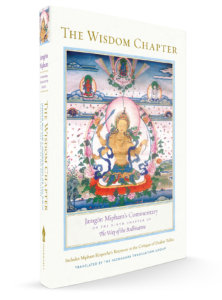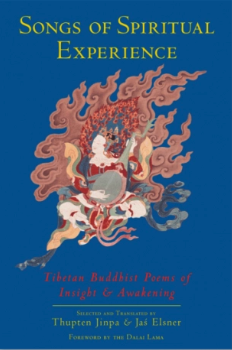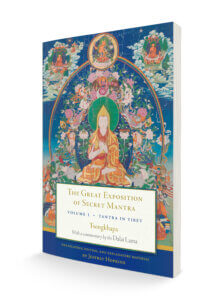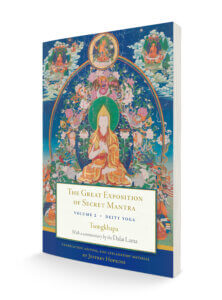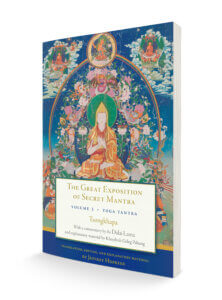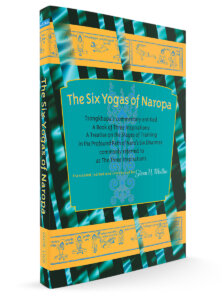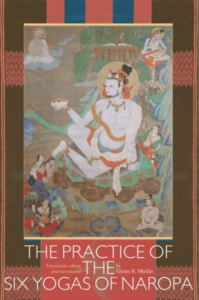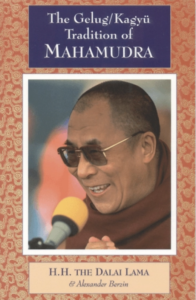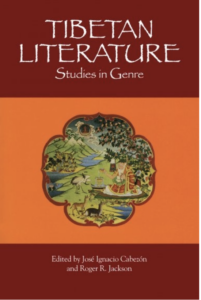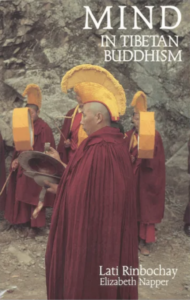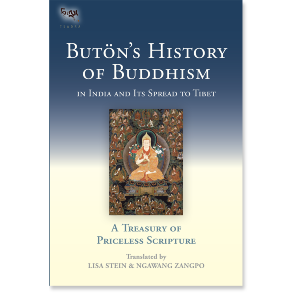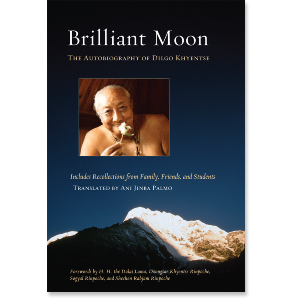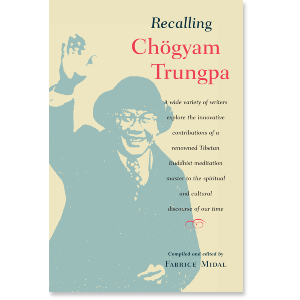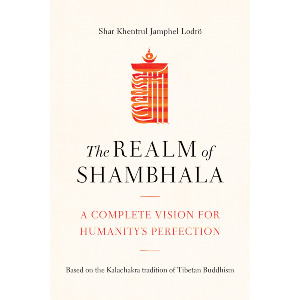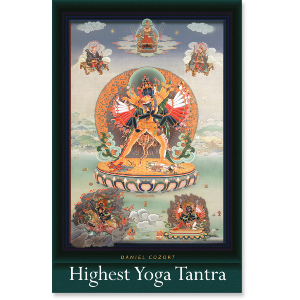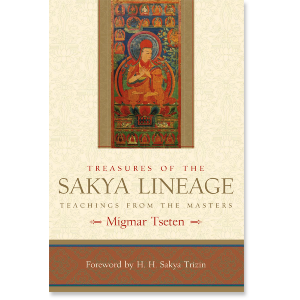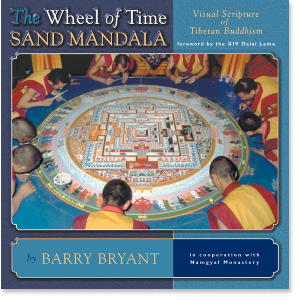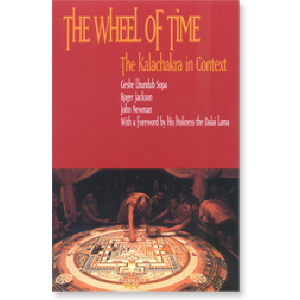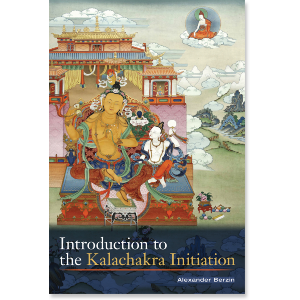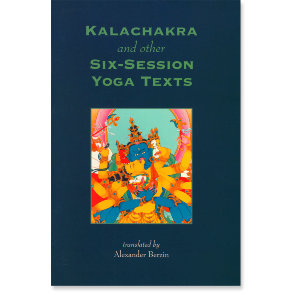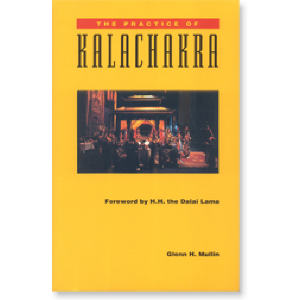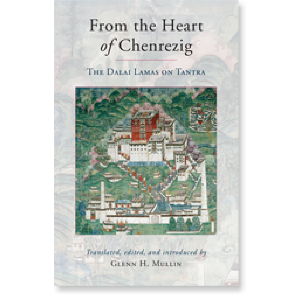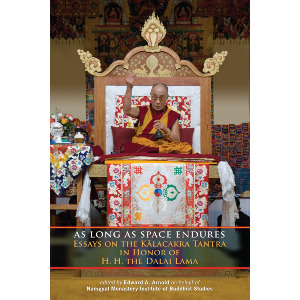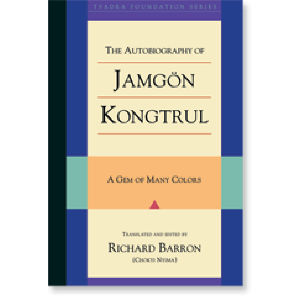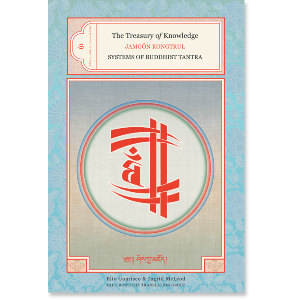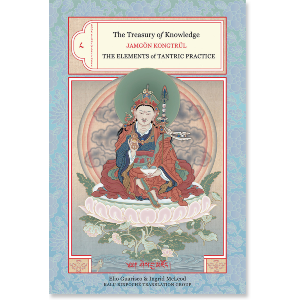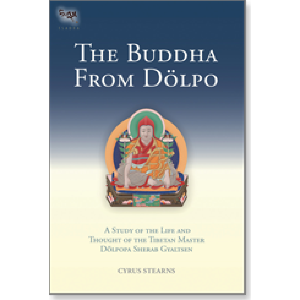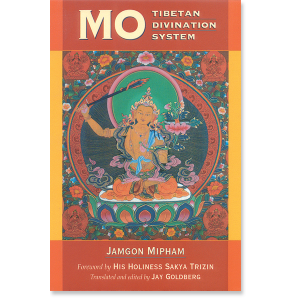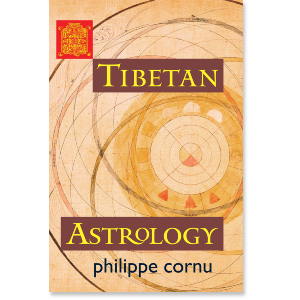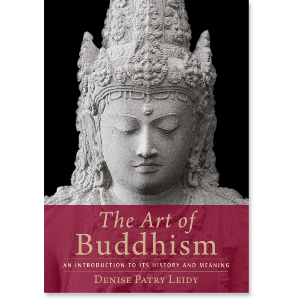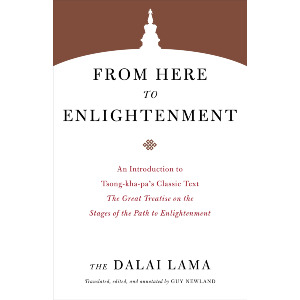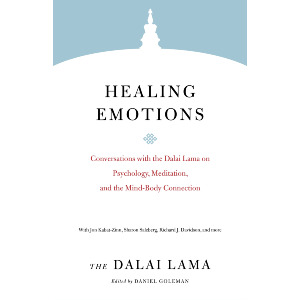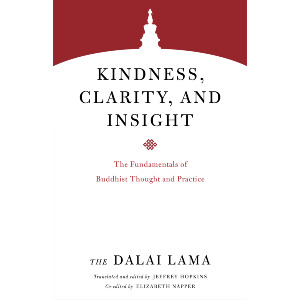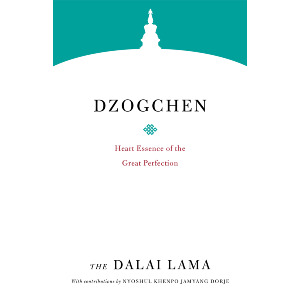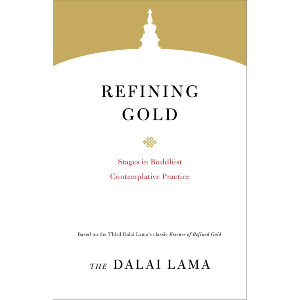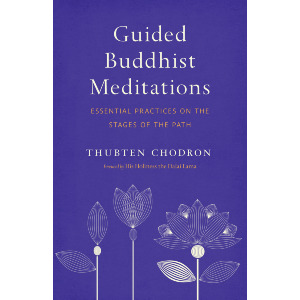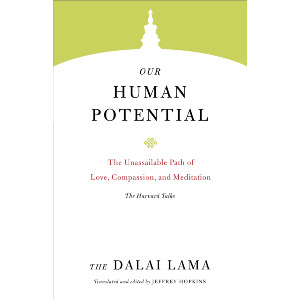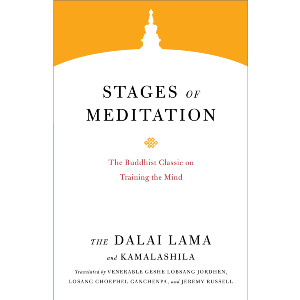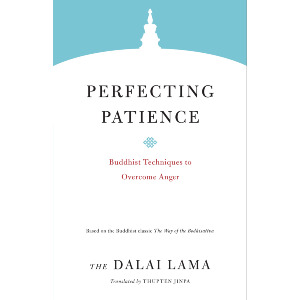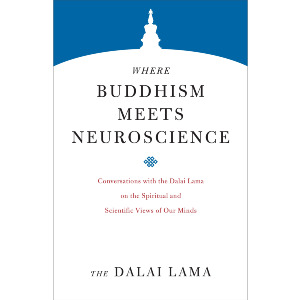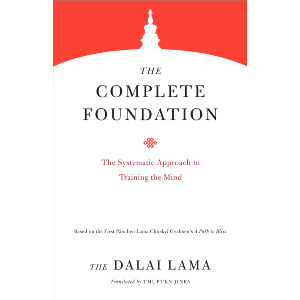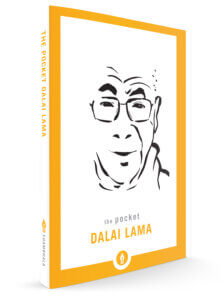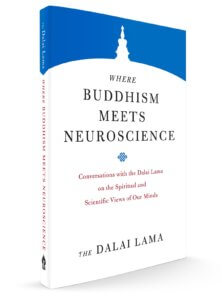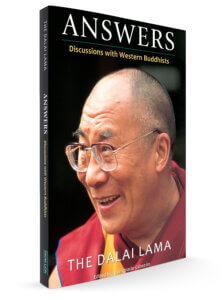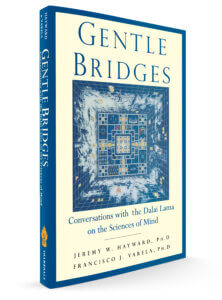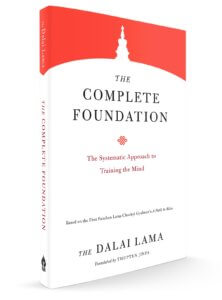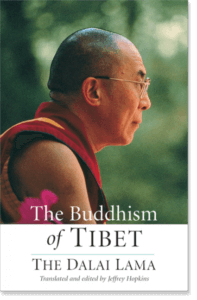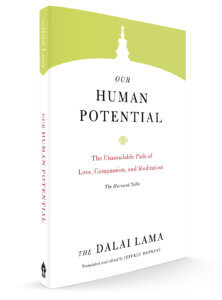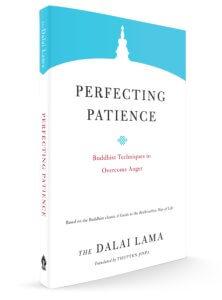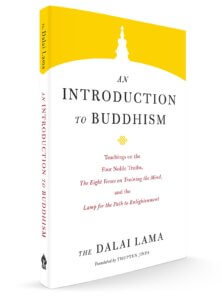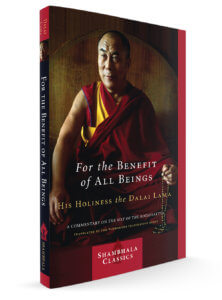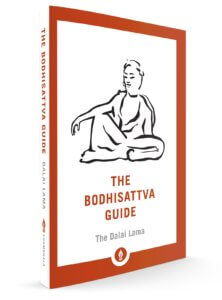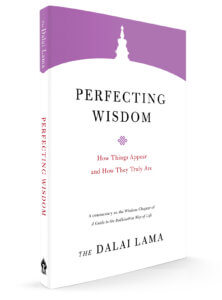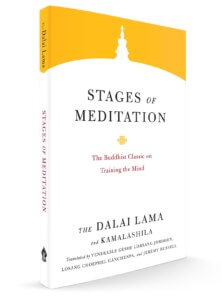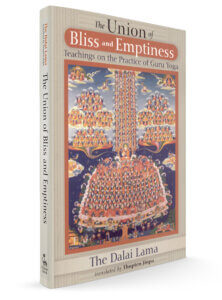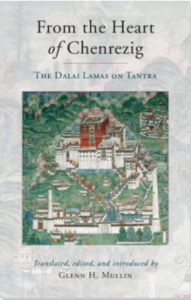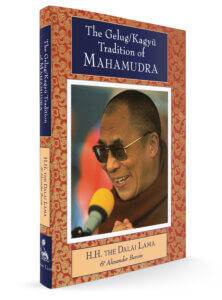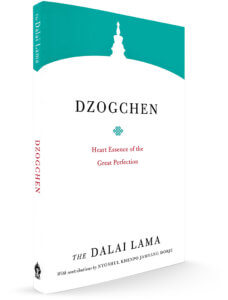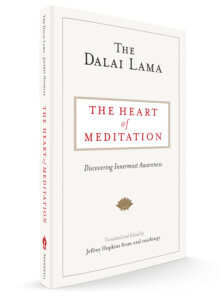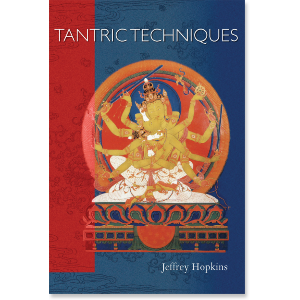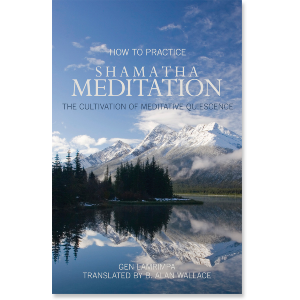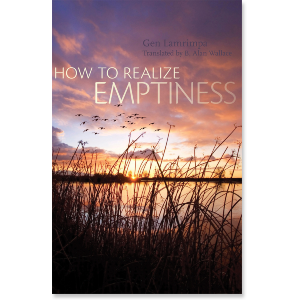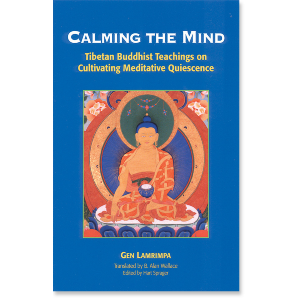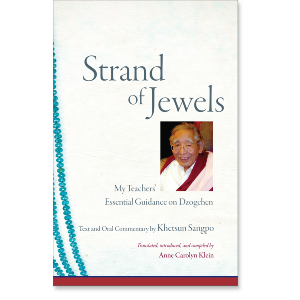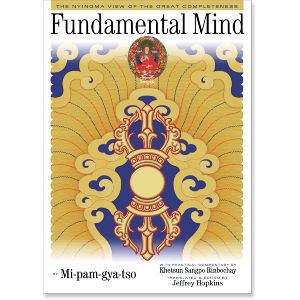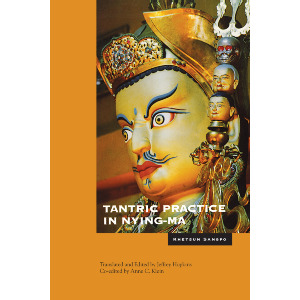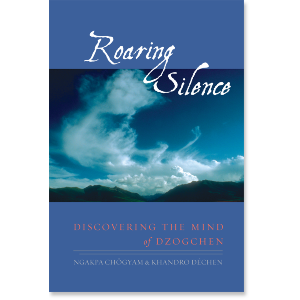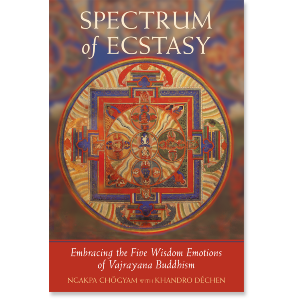

Jeffrey Hopkins
Jeffrey Hopkins, PhD, served for a decade as the interpreter for the Dalai Lama. A Buddhist scholar and the author of more than thirty-five books, he is Professor Emeritus at the University of Virginia, where he founded the largest academic program in Tibetan Buddhist studies in the West.
Jeffrey Hopkins
Jeffrey Hopkins, PhD, served for a decade as the interpreter for the Dalai Lama. A Buddhist scholar and the author of more than thirty-five books, he is Professor Emeritus at the University of Virginia, where he founded the largest academic program in Tibetan Buddhist studies in the West.
-
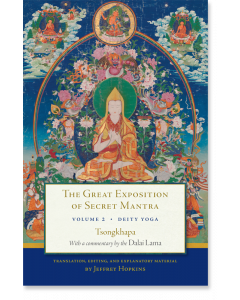 The Great Exposition of Secret Mantra, Volume 2$29.95- Paperback
The Great Exposition of Secret Mantra, Volume 2$29.95- PaperbackBy H.H. the Fourteenth Dalai Lama
By Tsongkhapa
Edited by Jeffrey Hopkins -
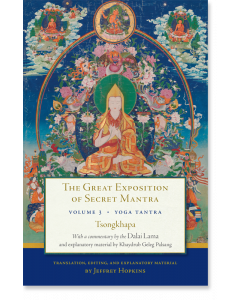 The Great Exposition of Secret Mantra, Volume 3$27.95- Paperback
The Great Exposition of Secret Mantra, Volume 3$27.95- PaperbackBy H.H. the Fourteenth Dalai Lama
By Tsongkhapa
Edited by Jeffrey Hopkins -
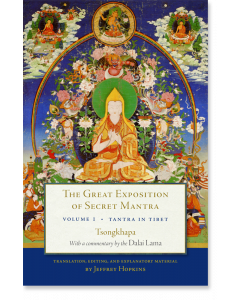 The Great Exposition of Secret Mantra, Volume 1$29.95- Paperback
The Great Exposition of Secret Mantra, Volume 1$29.95- PaperbackBy H.H. the Fourteenth Dalai Lama
Edited by Jeffrey Hopkins
By Tsongkhapa -
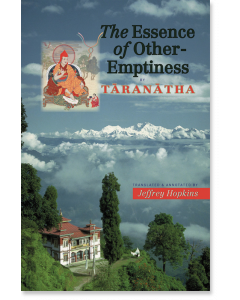 The Essence of Other-Emptiness$24.95- Paperback
The Essence of Other-Emptiness$24.95- PaperbackBy Taranatha
Translated by Jeffrey Hopkins
Translated by Lama Lodro Namgyel -
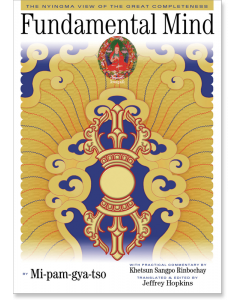 Fundamental Mind$18.95- Paperback
Fundamental Mind$18.95- PaperbackBy Khetsun Sangpo Rinpoche
Edited by Jeffrey Hopkins
Translated by Jeffrey Hopkins
By Jamgon Mipham -
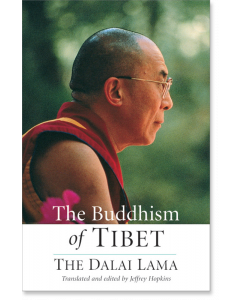 The Buddhism of Tibet$22.95- Paperback
The Buddhism of Tibet$22.95- PaperbackBy H.H. the Fourteenth Dalai Lama
Edited by Jeffrey Hopkins
Edited by Anne Carolyn Klein
Translated by Jeffrey Hopkins
Translated by Anne Carolyn Klein -
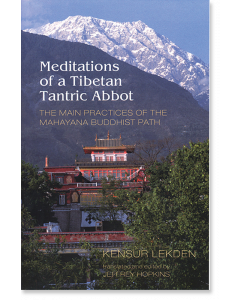 Meditations of a Tibetan Tantric Abbot$21.95- Paperback
Meditations of a Tibetan Tantric Abbot$21.95- PaperbackBy Kensur Lekden
Edited by Jeffrey Hopkins
Translated by Jeffrey Hopkins -
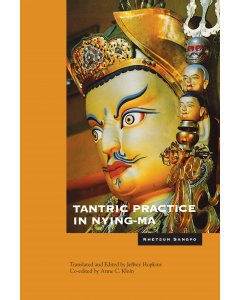 Tantric Practice in Nyingma$24.95- Paperback
Tantric Practice in Nyingma$24.95- PaperbackBy Khetsun Sangpo Rinpoche
Edited by Jeffrey Hopkins
Edited by Anne Carolyn Klein
Translated by Jeffrey Hopkins
Translated by Jeffrey Hopkins -
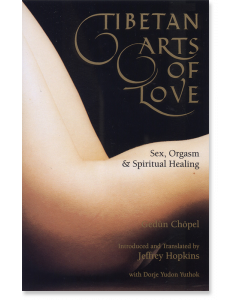 Tibetan Arts of Love$24.95- Paperback
Tibetan Arts of Love$24.95- PaperbackBy Gedun Chopel
Translated by Jeffrey Hopkins
Translated by Dorje Yudon Yuthok -
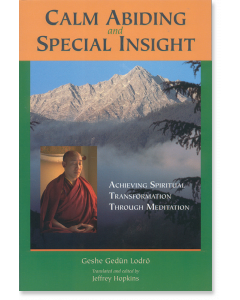 Calm Abiding and Special Insight$34.95- Paperback
Calm Abiding and Special Insight$34.95- PaperbackBy Geshe Gedun Lodro
Edited by Jeffrey Hopkins
Translated by Jeffrey Hopkins -
 Health through Balance$29.95- Paperback
Health through Balance$29.95- PaperbackBy Yeshi Dhonden
Edited by Jeffrey Hopkins
Translated by Jeffrey Hopkins -
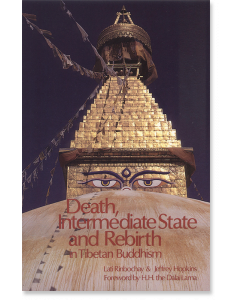 Death, Intermediate State, and Rebirth in Tibetan Buddhism$19.95- Paperback
Death, Intermediate State, and Rebirth in Tibetan Buddhism$19.95- PaperbackBy Lati Rinpoche
By Jeffrey Hopkins
Foreword by H.H. the Fourteenth Dalai Lama
- Buddhist Academic 4item
- Buddhist Biography/Memoir 1 item
- Buddhist Ethics 3item
- Buddhist Overviews 4item
- Buddhist Philosophy 4item
- Dependent Origination 1 item
- Introductions to Buddhism 4item
- Bardo Teachings 1 item
- Dalai Lamas 6item
- Death & Dying 1 item
- Deity Practice 2item
- Dzogchen 2item
- Gelug Tradition 9item
- Jonang Tradition 1 item
- Lojong/Mind Training 1 item
- Madhyamaka 2item
- Ngondro 1 item
- Nyingma Tradition 3item
- Phowa 1 item
- Shamatha 1 item
- Tantra 5item
- Tibetan Medicine 1 item
- Vipassana/Lhatong (Tibetan Specific) 1 item
- Relationships 1 item
- Sexuality 1 item
- Ayurveda 1 item
- Biography 1 item
GUIDES
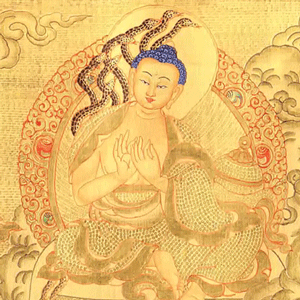

Nagarjuna
Nagarjuna
circa 150 – c. 250 CE
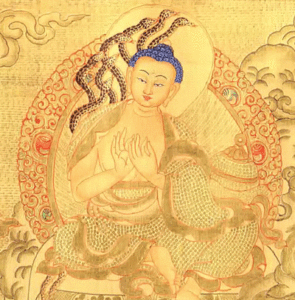
Of Nagarjuna’s life, we know almost nothing. He is said to have been born into a Brahmin family in the south of India around the beginning of the second century CE. He became a monk and a teacher of high renown and exerted a profound and pervasive influence on the evolution of the Buddhist tradition in India and beyond. Much of his life seems to have been spent at Sriparvata in the southern province of Andhra Pradesh, at a monastery built for him by king Gotamiputra, for whom he composed the Suhrllekha, his celebrated Letter to a Friend.
Nagarjuna is intimately associated with the Prajnaparamita sutras, the teachings on the Perfection of Wisdom, the earliest-known examples of which seem to have appeared in written form around the first century BCE, thus coinciding with the emergence of Mahayana, the Buddhism of the Great Vehicle.
It is recorded in the Pali Canon that the Buddha foretold the disappearance of some of his most profound teachings. They would be misunderstood and neglected, and would fall into oblivion. “In this way,” he said, “those discourses spoken by the Tathāgata that are deep, deep in meaning, supramundane, dealing with emptiness, will disappear.” There is no knowing whether on that occasion he was referring to the Perfection of Wisdom, but it is certain that the earliest exponents of the Mahayana believed that, with the Prajnaparamita scriptures, they were recovering a profound and long-lost doctrine. Nagarjuna seems to have been deeply implicated in this rediscovery. Questions of historicity aside, the story that he brought back seven volumes of the Prajnaparamita sutras from the subterranean realm of the nagas, where they had been preserved, conveys a clear message. In the eyes of Nagarjuna’s contemporaries and of later generations, the appearance of the Prajnaparamita sutras marked a new beginning in the history of Buddhism, and yet the teachings they contained were not innovations. And in their interpretation and propagation, Nagarjuna played a crucial role.
-Excerpted from the "Translator's Preface," The Root Stanzas of the Middle Way translated by Padmakara Translation Group
Jump to sections on this page:
Nagarjuna's Life | Madhayamaka & Reasoning | Praises
Advice | Tantra | Recent Works on Madhyamaka | Other Works and Resources

Nagarjuna's Life
A more comprehensive biography of Nagarjuna can be found in Butön's History of Buddhism in India and Its Spread to Tibet. A fourteenth-century Tibetan classic that serves as an excellent introduction to basic Buddhism as practiced throughout India and Tibet and describes the process of entering the Buddhist path through study and reflection.
What follows is a brief composite biography from a variety of sources including Butön Rinchen Drup's biography of Nagarjuna.
Overcoming his fated death
Nagarjuna was born to a Brahmin family in Vidarbha in present-day Maharashtra, India. Predicted to have a short life, he avoided an early demise by taking ordination at Nalanda monastery with Rahulabhadra, identified in some accounts as being the mahasiddha Saraha and in others as being the abbot of Nalanda; regardless, he is best known for his works in praise of Prajñaparamita. With an ordination name of Sriman, Nagarjuna undertook thorough studies of Buddhist teachings and became successful in defeating both Buddhists and non-Buddhists in debate.
Prajñaparamita sutras
Several nagas heard Sriman's teaching and subsequently invited him down into their realm, from which he later brought back special naga clay that was used in the construction of many temples and stupas. He also brought back, most famously, important Prajñaparamita sutras. Thenceforth he became known as Nagarjuna.
Butön describes the meaning of the name beautifully:
Naga signifies birth from the basic space of phenomena, abiding in neither the extreme of eternalism or nihilism, mastery over the vault of precious scriptures, and being endowed with the view that burns and illuminates. Arjuna signifies one who has procured worldly power. Thus, he is named Arjuna because he governs the kingdom of the doctrine and subdues the hosts of faulty enemies. Taken together, these two parts form the name "Nagarjuna."
Nagarjuna's activities were vast; his better-known accomplishments include the building of two structures in Bodhgaya- the stone fence around the Vajra Seat beneath the Bodhi tree and the stupa that sits atop the Mahabodhi Temple - as well as the wall around the great Dhanyakataka Stupa at Amaravati in present-day Andhra Pradesh.
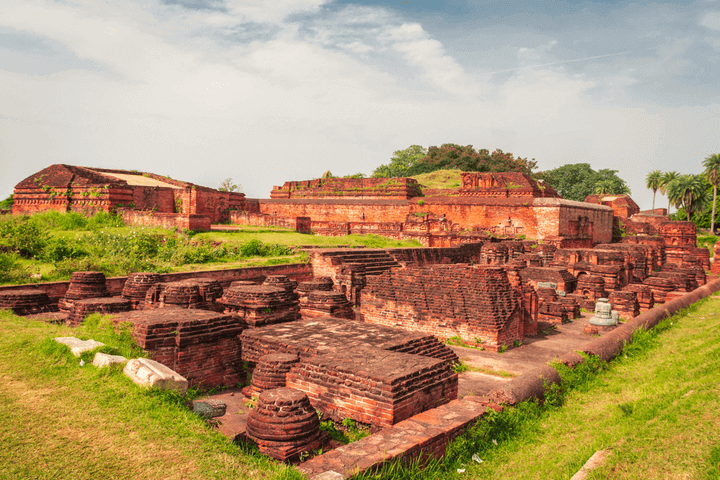
Karma at work
Nagarjuna passed away when he offered his head to a greedy prince who thought he could ensure his own long life by killing Nagarjuna. No blade would cut Nagarjuna, but he told the prince that in a past life he had killed an insect with a blade of kusha grass, so his head could be cut off with a blade of that grass which the prince then did.
It is believed that Nagarjuna's head and body were separated but do not decay and over time move closer together. Once they rejoin, his activity will continue.
Nagarjuna's Texts
The Tibetan Tengyur ascribes about one hundred eighty texts on both the sutras and tantras to him. There is a lot of scholarly debate about what Nagarjuna did and did not actually write, which is outside the scope of this article. Instead, we will focus on the major works widely attributed to him that are available in English.
His treatises are divided in various ways. Mabja Jangchub Tsondru divides them into three groups:
- Those belonging to the Causal Vehicle of Characteristics
- Those belonging to the Resultant Vehicle of Secret Mantra
- Those that show the two above to be identical in meaning
A bit arbitrarily, we will follow another traditional division which groups the treatises as follows: works on reasoning, praises, and advice. This schema ignores the large body of work on tantra and medicine, but most of what is available in English is included in these three groupings.
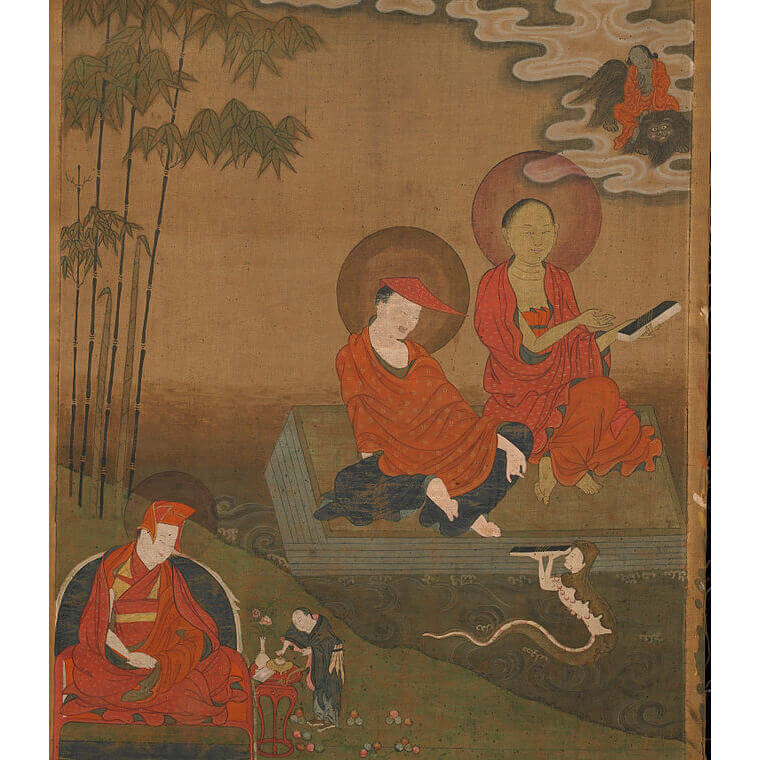
Nagarjuna on Madhyamaka & Reasoning
To him who taught that things arise dependently,
Not ceasing, not arising,
Not annihilated nor yet permanent,
Not coming, not departing,
Not different, not the same:
The stilling of all thought, and perfect peace:
To him, the best of teachers, perfect Buddha, I bow down.
The above verse is from Nagarjuna's famed Root Stanzas of the Middle Way—by far his most widely studied text.
The Root Stanzas of the Middle Way
This volume presents a new English translation of the founding text of the Madhyamaka (Middle Way) school of Mahayana Buddhism, Nagarjuna’s Root Stanzas of the Middle Way (Mulamadhyamakakarika) and includes the Tibetan version of the text. The Root Stanzas holds an honored place in all branches of Tibetan Buddhism, as well as in the Buddhist traditions found in China, Japan, and Korea, because of the way it develops the seminal view of emptiness (shunyata), which is crucial to understanding Mahayana Buddhism and central to its practice. It is prized for its pithy and pointed arguments that show that things lack intrinsic being and thus are “empty” (shunya). They abide in the Middle Way, free from the extremes of permanence and annihilation.
This translation was done following the commentary by Mipham Rinpoche, thus appealing to a living tradition that stretches back unbroken to the Tibetan translators and through their Sanskrit mentors to Nagarjuna himself.
The present work contains Nagarjuna's verses on the Middle Way accompanied by Mabja Jangchub Tsöndrü's famed commentary, the Ornament of Reason. Active in the twelfth century, Mabja was among the first Tibetans to rely on the works of the Indian master Candrakirti, and his account of the Middle Way exercised a deep and lasting influence on the development of Madhyamaka philosophy in all four schools of Buddhism in Tibet. Sharp, concise, and yet comprehensive, the Ornament of Reason has been cherished by generations of scholar-practitioners. The late Khunu Lama Tenzin Gyaltsen Rinpoche, a renowned authority on the subject, often referred to this commentary as "the best there is." A visual outline of the commentary has been added that clearly shows the structure of each chapter and makes the arguments easier to follow.
Hardcover | eBook
$27.99 - eBook
Paperback | eBook
$24.95 - Paperback
The Sun of Wisdom: Teachings on the Noble Nagarjuna's Fundamental Wisdom of the Middle Way
by Khenpo Tsultrim Gyamtso
An excellent contemporary commentary on the Mulamadhyamakakarika is Khenpo Tsultrim Gyamtso's The Sun of Wisdom. Focusing on the most important root verses, it is a very accessible entryway into this fundamental but challenging text.
As Khen Rinpoche says,
All the verses in this book are excellent supports for developing your precise knowledge of genuine reality through study, reflection, and meditation. You should recite them as much as possible, memorize them, and reflect on them until doubt-free certainty in their meaning arises within. Then you should recall their meaning again and again, to keep your understanding fresh and stable. Whenever you have time, use them as the support for the practices of analytical and resting meditation. If you do all of this, it is certain that the sun of wisdom will dawn within you, to the immeasurable benefit of yourselves and others.
Paperback | eBook
$27.95 - Paperback
by David Ross Komito and Geshe Sonam Rinchen
Nagarjuna's Shunyatasaptati, or Seventy Stanzas on Emptiness (there are actually seventy-three), is an expansion of the seventh section of the Root Verses, "Analysis of Characteristics of the Conditioned," that addresses some questions people had about the presentation of conditioned phenomena and whether that conflicted with sutra teachings. As is often the case, the answer lies in the difference between the conventional point of view of beings and how things actually are.
Additional Texts on Reasoning by Other Publishers
Of the remaining texts in this category,
- Nagarjuna's Yuktisastika, or Sixty Verses on Reasoning, has been translated by Joseph Loizzo as Nagarjuna's Reason Sixty and is available from Columbia University Press.
- The Vigrahavyavartani, or Refutation of Objections, was translated most recently by Jan Westerhoff and published as The Dispeller of Disputes by Oxford University Press.
- And lastly, Nagarjuna's Vaidalyaprakarana is included in Nagarjuniana by Christian Lindtner, published by Motilal Banarsidass.
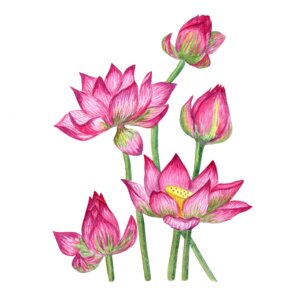
Nagarjuna's Praises
The Tibetan Tengyur identifies eighteen works of praise by Nagarjuna, and this praise is generally directed at Buddha Shakyamuni.
Paperback | eBook
$29.95 - Paperback
Translated and introduced by Karl Brunnholzl
While most of Nagarjuna's praises are directed to Buddha Shakyamuni, the main work of Nagarjuna's praises we have in English is the Dharmadhatustava, translated as In Praise of Dharmadhatu, and this work directs praise instead at the ultimate nature of mind. Karl Brunnhölzl's translation, which includes an in-depth introduction to Nagarjuna and his works in general and this one specifically, also contains a commentary by the Third Karmapa Rangjung Dorje.
The text shows how our buddha nature is obscured by stains but also how the stains can be removed by following the path of the Mahayana and can be fully revealed as buddhahood. Rangjung Dorje's commentary is also of particular interest because even though he is known for his shentong views, this commentary shows how his actual understanding is far more subtle than scholars have sometimes supposed and is in fact an elegant synthesis of the two great streams of the Mahayana, Madhyamaka, and Yogacara.
Paperback | eBook
$49.95 - Paperback
Translated and introduced by Karl Brunnholzl
Three other praises of Nagarjuna's are included in the collection Straight from the Heart, also translated and introduced by Karl Brunnhölzl</a>. Interestingly, in these praises, Nagarjuna often refers to buddhahood in positive terms, in contrast to much of his other work, which deconstructs any possibility of phenomena truly existing. As Brunnhölzl points out, despite there being nothing to pinpoint in the dharmadhatu as the nature of the mind, it can still be experienced directly and personally in a non-referential way. In other words, enlightenment is not some empty, dark nothingness, but wide-awake awareness of mind completely free from reference points.
Nagarjuna's Advice
There are seven texts included in the advice category. The two most famous are the Suhrllekha, or Letter to a Friend, and the Ratnavali, or Nagarjuna's Precious Garland: Buddhist Advice for Living and Liberation.
Paperback | eBook
$24.95 - Paperback
Nagarjuna's Letter to a Friend: With Commentary by Kangyur Rinpoche
Translated by the Padmakara Translation Group
Letter to a Friend is a set of verses of advice to a king whose identity is uncertain but who was most likely one of a number of kings in present-day Andhra Pradesh. There are several translations of Letter to a Friend, the most recent one being by the Padmakara Translation Group, which includes a commentary by Kyabje Kangyur Rinpoche.
The 123 verses are some of the most frequently quoted lines in all of Tibetan Buddhism and are taught often to this day. The text covers the entire Mahayana path, fusing daily conduct with the framework of stages that lead beings to fully enlightened buddhahood. It makes the entire path totally accessible to laypeople, demonstrating how to completely immerse oneself in the spiritual life while still living in society.
Paperback | eBook
$27.95 - Paperback
Translated by Jeffrey Hopkins
Precious Garland has been categorized by some as belonging among Nagarjuna's works on reasoning, but more traditionally it is part of the advice collection.
In the Precious Garland, he offers intimate counsel on how to conduct one's life and how to construct social policies that reflect Buddhist ideals. The advice for personal happiness is concerned first with improving one's condition over the course of lifetimes, and then with release from all kinds of suffering, culminating in Buddhahood. Nagarjuna describes the cause and effect sequences for the development of happiness within ordinary life, as well as the practices of wisdom, realizing emptiness, and compassion that lead to enlightenment. He describes a Buddha's qualities and offers encouraging advice on the effectiveness of practices that reveal the vast attributes of Buddhahood. In his advice on social and governmental policy, Nagarjuna emphasizes education and compassionate care for all living beings. He also objects to the death penalty. Calling for the appointment of government figures who are not seeking profit or fame, he advises that a selfish motivation will lead to misfortune. The book includes a detailed analysis of attachment to sensual objects as a preparation for realization of the profound truth that, when realized, makes attachment impossible.
Nagarjuna on Tantra
The one work we have is not actually by Nagarjuna but the basis for it is Nagarjuna's Piṇḍīkramaḥ and the Sūtramelāpakam.
Guhyasamaja Practice in the Arya Nagarjuna System, Volume One: The Generation Stage
by Gyumé Khensur Lobsang Jampa, translated by Artemus Engle
The Guhyasamāja Tantra is one of the Unexcelled Yoga Tantras of Vajrayana Buddhism. In the initial, generation-stage practice, one engages in a prescribed sequence of visualizations of oneself as an enlightened being in a purified environment in order to prepare one’s mind and body to engage in the second stage: the completion stage. The latter works directly with the subtle energies of one’s mind and body and transforms them into the enlightened mind and body of a buddha. In this book, Gyumé Khensur Lobsang Jampa, a former abbot of Gyumé Tantric College, provides complete instructions on how to practice the generation stage of Guhyasamāja, explaining the visualizations, offerings, and mantras involved, what they symbolize, and the purpose they serve. These instructions, which are usually imparted only orally from master to student after the student has been initiated into the Guhyasamāja mandala, are now being published in English for the first time and are supplemented by extracts from key written commentaries in the footnotes to support practitioners who have received the required transmissions from a holder of this lineage. The complete self-generation ritual is included in the second part of the book, with the Tibetan on facing pages, which can be used by those who read Tibetan and want to recite the ritual in Tibetan.
Hardcover | eBook
$49.95 - Hardcover
Subsequent Commentaries by Great Indian and Tibetan Masters
There are of course so many commentaries and commentaries on commentaries for Nagarjuna's work, by masters including the following:
...and many more great teachers up to the present. Several of these are included in subsequent Great Masters Series articles.
Recent works on Madhyamaka
Other Works and Resources
Paperback | eBook
$19.95 - Paperback
The Prince and the Zombie: Tibetan Tales of Karma
By Tenzin Wangmo, foreword by Matthieu Ricard
One last book should be mentioned here, as it's a bit of a leap from the traditional texts by and literature about Nagarjuna. The Prince and the Zombie: Tibetan Tales of Karma by Tenzin Wangmo is a book based on Tibetan oral folktale traditions.
In this book,was published in the spring of 2015, a young prince encounters Nagarjuna, who guides him and gives him the task of bringing a zombie-that's really the best translation available-back from one of the great charnel grounds of India. It is a story full of magic and excitement and could serve as a brief vacation for the mind in between studying verses on emptiness!
Discover Related Reader's Guides on the Great Masters
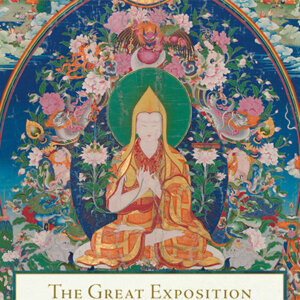
Tsongkhapa: A Guide to His Life and Works

The Life of Tsongkhapa Lobsang Drakpa (1357-1419)
Tsongkhapa Lobzang Drakpa (1357–1419), was one of the most important figures in Tibet, historically and philosophically. As the founder of the Gelug school he made an enormous contribution to revitalizing Buddhism in Tibet. Regarded as an emanation of Manjushri--the bodhisattva of wisdom and discerning intelligence, Tsongkhapa was of keen intellect as well as experiential understanding of the Buddhist tradition. He undertook many long retreats during which he had profound visions out of which he wrote many of his celebrated treatises including Lam Rim Chenmo or The Great Exposition of the Stages of the Path. A prolific writer, he composed 210 treatises, compiled into 20 volumes wherein he emphasized the combined paths of Sutra and Tanta. In addition, he established the acclaimed Ganden monastery.
For a longer biography of Tsongkhapa read an excerpt from Geshe Sonam Rinchen's commentary on The Three Principal Aspects of the Path.
"Born in 1357 in Amdo, northeastern Tibet, and educated in central Tibet, Tsongkhapa led a life that exemplified the importance of study, critical reflection, and meditative practice. In an autobiographical poem he declared:
"First I sought wide and extensive learning,
Second I perceived all teachings as personal instructions,
Finally, I engaged in meditative practice day and night;
All these I dedicated to the flourishing of the Buddha’s teaching.By the end of his life, 600 years ago, Tsongkhapa was widely revered across Tibet. He had studied and corresponded with the most renowned teachers of his time, from all the major traditions, and had spent years in meditative retreat."
—From the Foreward by H. H. The Dalai Lama, Tsongkhapa: A Buddha in the Land of Snows, by Thupten Jinpa
The Definitive Biography of Tsongkhapa
Paperback | Ebook
$29.95 - Paperback
Marking the 600th anniversary of Tsongkhapa, in 2019 we published what is the most comprehensive, definitive biography of this great figure, written by Thupten Jinpa. The author is best known as the main translator for the Dalai Lama, but he is an author and scholar himself, having earned a Geshe degree. In the author’s words,
this new biography of Tsongkhapa…is aimed primarily at the contemporary reader. And it seeks to answer the following key questions for them: ‘Who was or is Tsongkhapa? What is he to Tibetan Buddhism? How did he come to assume the deified status he continues to enjoy for the dominant Geluk School of Tibetan Buddhism? What relevance, if any, do Tsongkhapa’s thought and legacy have for our contemporary thought and culture?
—Thupten Jinpa, from the Introduction to Tsongkhapa: A Buddha in the Land of Snows
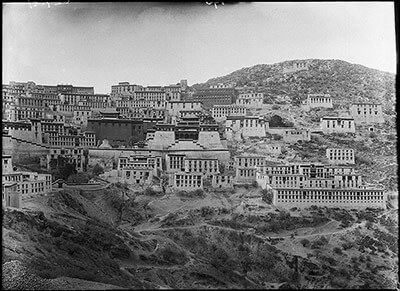
Ganden monastery, founded by Tsongkhapa, photographed in 1921 by Sir Charles Bell
Whoever sees or hears
Or contemplates these prayers,
May they never be discouraged
In seeking the bodhisattva’s amazing aspirations.
By praying with such expansive thought
Created from the power of pure intention,
May I achieve the perfection of prayers
And fulfill the wishes of all sentient beings.
Tsongkhapa's Lam Rim Chenmo, The Great Treatise on the Stages of the Path to Enlightenment
Tsongkhapa's main contribution to this genre is the famous Lamrim Chenmo or The Great Treatise on the Stages of the Path to Enlightenment. It is also generally considered his most influential work, studied and practiced by tens of thousands today.
The background to this work is on one of Tsongkhapa’s own letters to a lama, included in Art Engle's The Inner Science of Buddhist Practice, where he describes it as building on Atisha’s Lamp for the Path to Enlightenment:
“It is clear that this instruction [introduced] by [Atisha] Dīpaṃkara Śrījnāna on the stages of the path to enlightenment . . . teaches [the meanings contained in] all the canonical scriptures, their commentaries, and related instruction by combining them into a single graded path. One can see that when taught by a capable teacher and put into practice by able listeners it brings order, not just to some minor instruction, but to the entire [body of] canonical scriptures. Therefore, I have not taught a wide variety of [other] instructions.”
Paperback | Ebook
$19.95 - Paperback
The Great Treatise on the Stages of the Path to Enlightenment (Vol. 1-3)
The Great Treatise on the Stages of the Path to Enlightenment (Tib. Lam rim chen mo) is one of the brightest jewels in the world’s treasury of sacred literature. The author, Tsong-kha-pa, completed it in 1402, and it soon became one of the most renowned works of spiritual practice and philosophy in the world of Tibetan Buddhism. Because it condenses all the exoteric sūtra scriptures into a meditation manual that is easy to understand, scholars and practitioners rely on its authoritative presentation as a gateway that leads to a full understanding of the Buddha’s teachings.
Tsong-kha-pa took great pains to base his insights on classical Indian Buddhist literature, illustrating his points with classical citations as well as with sayings of the masters of the earlier Kadampa tradition. In this way the text demonstrates clearly how Tibetan Buddhism carefully preserved and developed the Indian Buddhist traditions.
Paperback| Ebook
$34.95 - Paperback
(Volume 1)
By Tsongkhapa
Edited by Joshua Cutler and Guy Newland, Translated by Lamrim Chenmo Translation Committee
This first of three volumes covers all the practices that are prerequisite for developing the spirit of enlightenment (bodhicitta).
Paperback| Ebook
$28.95 - Paperback
(Volume 2)
By Tsongkhapa
Edited by Joshua Cutler and Guy Newland, Translated by Lamrim Chenmo Translation Committee
This second of three volumes covers the deeds of the bodhisattvas, as well as how to train in the six perfections.
Paperback| Ebook
$34.95 - Paperback
(Volume 3)
By Tsongkhapa
Edited by Joshua Cutler and Guy Newland, Translated by Lamrim Chenmo Translation Committee
This third and final volume contains a presentation of the two most important topics in the work: meditative serenity (śamatha) and supramundane insight into the nature of reality (vipaśyanā).
Commentaries on Tsongkhapa's Great Treatise and other Lam Rim (Stages of the Path) texts
"The Great Treatise was written by Lama Tsong-kha-pa, a great scholar, a real holder of the Nalanda tradition. I think he is one of the very best Tibetan scholars. Although it is now widely available in Tibetan as well as English, you see that I brought with me today my own personal copy of this text. On March 17th, 1959, when I left Norbulingka that night, I brought this book with me. Since then I have used it ten or fifteen times to give teachings, all from this copy. So this is something very dear to me."
-H.H The Dalai Lama discussing his copy of the Great Treatise in From Here to Enlightenment
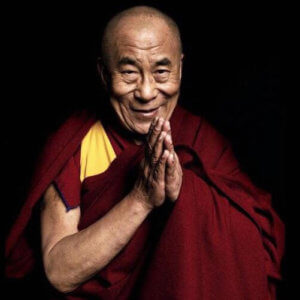
Paperback | Ebook
$19.95 - Paperback
From Here to Enlightenment
An Introduction to Tsong-kha-pa's Classic Text The Great Treatise on the Stages of the Path to Enlightenment
By H.H. The Dalai Lama and translated by Guy Newland
When the Dalai Lama was forced into exile in 1959, he could take only a few items with him. Among these cherished belongings was his copy of Tsong-kha-pa’s classic text The Great Treatise on the Stages of the Path to Enlightenment. This text distills all the essential points of Tibetan Buddhism, clearly unfolding the entire Buddhist path.
In 2008, celebrating the long-awaited completion of the English translation of the Great Treatise, the Dalai Lama gave a historic six-day teaching at Lehigh University to explain the meaning of the text and underscore its importance. It is the longest teaching he has ever given to Westerners on just one text—and the most comprehensive. From Here to Enlightenment makes the teachings from this momentous event available for a wider audience.
Paperback | Ebook
$21.95 - Paperback
Introduction to Emptiness
As Taught in Tsong-kha-pa's Great Treatise on the Stages of the Path
By Guy Newland
Readers are hard-pressed to find books that can help them understand the central concept in Mahayana Buddhism—the idea that ultimate reality is emptiness. In clear language, Introduction to Emptiness explains that emptiness is not a mystical sort of nothingness, but a specific truth that can and must be understood through calm and careful reflection. Newland's contemporary examples and vivid anecdotes will help readers understand this core concept as presented in one of the great classic texts of the Tibetan tradition, Tsong-kha-pa's Great Treatise on the Stages of the Path to Enlightenment. This new edition includes quintessential points for each chapter.
Paperback | Ebook
$17.95 - Paperback
Refining Gold
Stages in Buddhist Contemplative Practice
By H.H. The Dalai Lama
In this extensive teaching, the Dalai Lama beautifully elucidates the meaning of the path to enlightenment through his own direct spiritual advice and personal reflections. Based on two very famous Tibetan text—Tsongkhapa's Song of the Stages on the Spiritual Path and the Third Dalai Lama's Essence of Refined Gold—this teaching presents in practical terms the essential instructions for the attainment of enlightenment. Its direct approach and lucid style make Refining Gold one of the most accessible introductions to Tibetan Buddhism ever published. His discourse draws out the meaning of the Third Dalai Lama’s famous Essence of Refined Gold as he speaks directly to the reader, offering advice, personal reflections, and scriptural commentary. He says in practical terms what the student must do to attain enlightenment.
Tsongkhapa's Three Principle Aspects of the Path
This is the shortest Lamrim text Tsongkhapa composed. Tsongkhapa wrote the fourteen stanzas of this classic distillation of all the paths of practice that lead to enlightenment. The three principal elements of the path referred to are: (1) renunciation, tied to the wish for freedom from cyclic existence; (2) the motivation to attain enlightenment for the benefit of others; (3) cultivating the correct view that realizes emptiness.
Paperback | eBook
$21.95 - Paperback
Three Principal Aspects of the Path
By Geshe Sonam Rinchen, edited and translated by Ruth Sonam
The wish for freedom, the altruistic intention, and the wisdom realizing emptiness constitute the essence of the Buddhist path. In this teaching, Geshe Sonam Rinchen explains, in clear and readily accessible terms, Je Tsongkhapa’s (1357–1419) famed presentation of these three essential topics.
The Three Principal Aspects is also included in Cutting Through Appearances: Practice and Theory of Tibetan Buddhism in which Geshe Sopa annotates the Fourth Panchen Lama’s instructions on how to practice this text in a meditation session.
His Holiness the Dalai Lama teaches on this text, and this is included as the chapter “The Path to Enlightenment” in Kindness, Clarity, and Insight.
Paperback | Ebook
$39.95 - Paperback
Paperback | Ebook
$16.95 - Paperback
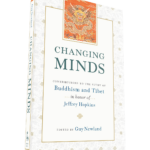
Paperback | eBook
$29.95 - Paperback
Another work where Tsongkhapa’s Lamrim is featured is in Changing Minds: Contributions to the Study of Buddhism and Tibet in Honor of Jeffrey Hopkins. There are three chapters devoted to Tsongkhapa:
- Guy Newland’s Ask a Farmer: Ultimate Analysis and Conventional Existence in Tsongkhapa’s Lam Rim Chen Mo
- Daniel Cozort’s Cutting the Roots of Virtue: Tsongkhapa on the Results of Anger
- Elizabeth Napper’s Ethics as the Basis of a Tantric Tradition: Tsongkhapa and the Founding of the Gelugpa Order
Lotsawa House also includes a translation of these fourteen stanzas.
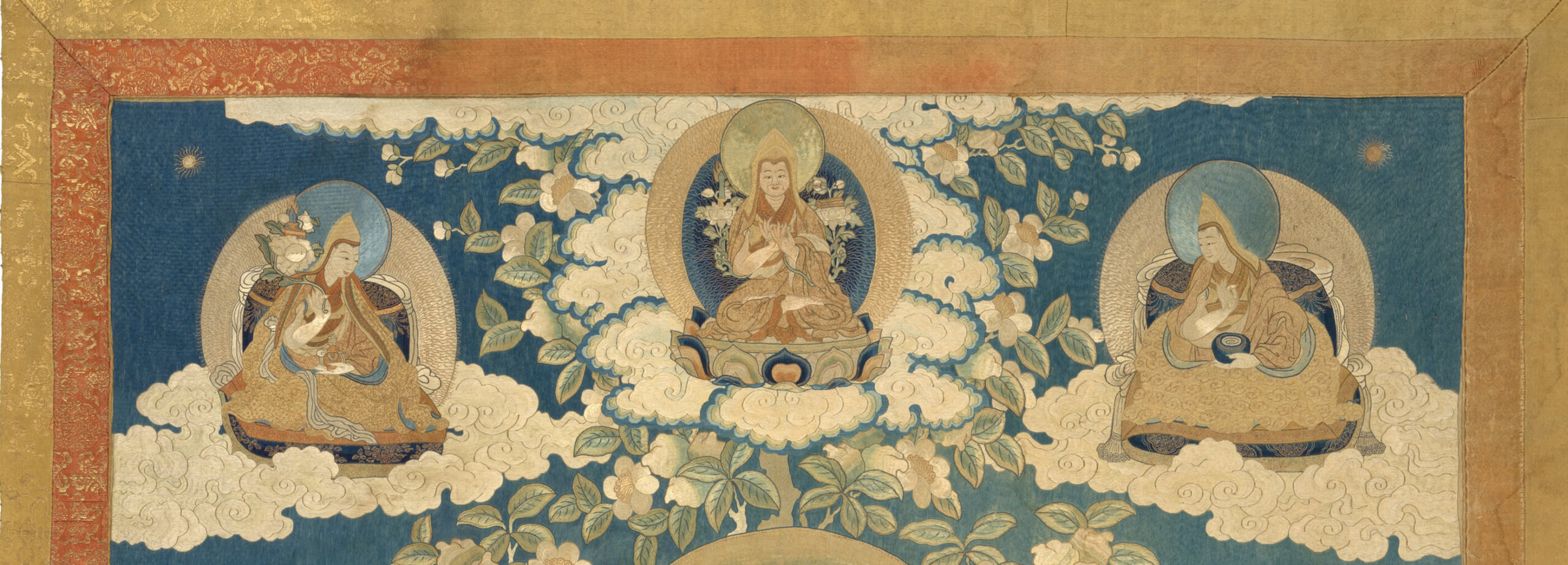
Tsongkhapa on Madhyamaka, The Middle Way School
Tsongkhapa is known for his distinct approach to the middle way philosophical system (madhyamaka) propounded by Indian masters Nāgārjuna (circa 200 CE) and Candrakīrti (circa 600 CE).
"I first went to India in 1972 on a dissertation research Fulbright fellow-ship, where although advised by the Fulbright Commission in New Delhi not to go to Dharmsala because of possible political complications, I went after a brief trip to Banaras. There I found that the Dalai Lama was about to begin a sixteen-day series of four- to six-hour lectures on Tsong-kha-pa Lo-sang-drak-pa’s Medium-Length Exposition of the Stages of the Path to Enlightenment Practiced by Persons of Three Capacities. Despite my cynicism that a governmentally appointed reincarnation could possibly have much to offer, I slowly became fascinated first with the strength and speed of his articulation and then, much more so, with the touching meanings that were conveyed."
-Jeffrey Hopkins, from the Preface to Tsong-kha-pa's Final Exposition of Wisdom

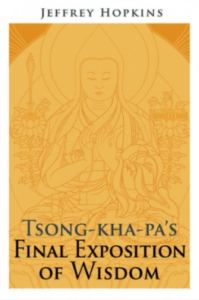
Paperback | eBook
$44.95 - Paperback
Tsong-kha-pa's Final Exposition of Wisdom
By Jeffrey Hopkins
In fourteenth- and fifteenth-century Tibet there was great ferment about what makes enlightenment possible, since systems of self-liberation must show what factors pre-exist in the mind that allow for transformation into a state of freedom from suffering. This controversy about the nature of mind, which persists to the present day, raises many questions. This book first presents the final exposition of special insight by Tsong-kha-pa, the founder of the Ge-luk-pa order of Tibetan Buddhism, in his medium-length Exposition of the Stages of the Path as well as the sections on the object of negation and on the two truths in his Illumination of the Thought: Extensive Explanation of Chandrakirti's Supplement to Nagarjuna's "Treatise on the Middle." It then details the views of his predecessor Dol-po-pa Shay-rap Gyel-tsen, the seminal author of philosophical treatises of the Jo-nang-pa order, as found in his Mountain Doctrine, followed by an analysis of Tsong-kha-pa's reactions. By contrasting the two systems—Dol-po-pa's doctrine of other-emptiness and Tsong-kha-pa's doctrine of self-emptiness—both views emerge more clearly, contributing to a fuller picture of reality as viewed in Tibetan Buddhism. Tsong-kha-pa's Final Exposition of Wisdom brilliantly explicates ignorance and wisdom, explains the relationship between dependent-arising and emptiness, shows how to meditate on emptiness, and explains what it means to view phenomena as like illusions.
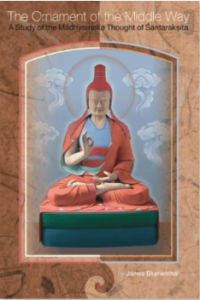
Paperback
$34.95 - Paperback
The Ornament of the Middle Way
A Study of the Madhyamaka Thought of Santaraksita
By James Blumenthal
The late James Blumenthal explores this important text by Shantarakshita and brings in Tsongkhapa’s text on this subject.
Shantarakshita's The Ornament of the Middle Way is among the most important Mahayana Buddhist philosophical treatises to emerge on the Indian subcontinent. In many respects, it represents the culmination of more than 1300 years of philosophical dialogue and inquiry since the time of the historical Buddha Shakyamuni. Shantarakshita set forth the foundation of a syncretic approach to contemporary ideas by synthesizing the three major trends in Indian Buddhist thought at the time (the Madhyamaka thought of Nagarjuna, the Yogachara thought of Asanga, and the logical and epistemological thought of Dharmakirti) into one consistent and coherent system. Shantarakshitas's text is considered to be the quintessential exposition or root text of the school of Buddhist philosophical thought known in Tibet as Yogachara-Svatantrika-Madhyamaka. In addition to examining his ideas in their Indian context, this study examines the way Shantarakshita's ideas have been understood by and have been an influence on Tibetan Buddhist traditions. Specifically, Blumenthal examines the way scholars from the Geluk School of Tibetan Buddhism have interpreted, represented, and incorporated Santaraksita's ideas into their own philosophical project. This is the first book-length study of the Madyamaka thought of Shantarakshita in any Western language. It includes a new translation of Shantarakshita's treatise, extensive extracts from his autocommentary, and the first complete translation of the primary Geluk commentary on Shantarakshita's treatise.
"As a religious reformer, he has been likened to Luther by Western Buddhologists; but as a religious scholar he is regarded in his own culture as a genius whose statue more closely parallels that of Aquinas in Western Christianity. For Tsongkhapa created his own unique interpretation of Buddhist systematics and hermeneutics, in which he synthesized themes from all the Tibetan Buddhist traditions of his era. For these reasons he was praised by the Eight Karmapa as Tibet's chief exponent of ultimate truth, who revived the Buddha's doctrine at a time when the teachings of all four major Tibetan Buddhist lineages were in decline."
-B. Alan Wallace, from the Preface to Balancing the Mind
Paperback | eBook
$24.95 - Paperback
Balancing the Mind
A Tibetan Buddhist Approach to Refining Attention
By B. Alan Wallace
For centuries, Tibetan Buddhist contemplatives have directly explored consciousness through carefully honed and rigorous techniques of meditation. B. Alan Wallace explains the methods and experiences of Tibetan practitioners and compares these with investigations of consciousness by Western scientists and philosophers. Balancing the Mind includes a translation of the classic discussion of methods for developing exceptionally high degrees of attentional stability and clarity by fifteenth-century Tibetan contemplative Tsongkhapa.
Tsongkhapa and the Debate over the Two Truths
Tsongkhapa is famous—and in some circles controversial—for his presentation and positioning of the Prasangika view of Madhyamaka. Any discussion or debate of this subject invariably references Tsongkhapa.
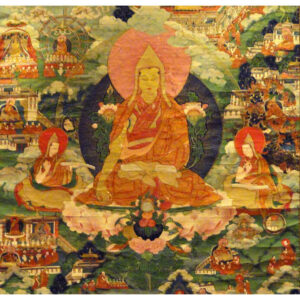
Hardcover | eBook
$78.00 - Hardcover
The Center of a Sunlight Sky
Madhyamaka in the Kagyu Tradition
By Karl Brunnhölzl
This comprehensive work by Karl Brunnholzl explores all facets of Madhyamaka in the Kagyu tradition, but no analysis of Madhyamaka can leave out Tsongkhapa who appears throughout this work. There is a sixty-page section comparing the views of Tsongkhapa to those of Mikyo Dorje’s “whose writing, not only is a reaction to the position of Tsongkhapa and his followers but addresses most of the views on Madhyamaka that were current in Tibet at the time, including the controversial issue of ‘Shentong-Madhyamaka.’”
Paperback| eBook
$39.95 - Paperback
The Adornment of the Middle Way
Shantarakshita's Madhyamakalankara with Commentary by Jamgon Mipham
By Jamgon Mipham, translated by Padmakara Translation Group
For a different take on Shantarakshita's The Ornament of the Middle Way (same text, differently translated title) The Adornment of the Middle Way translated by the Padmakara Translation Group, gives a helpful introduction on the various interpretations. This longer passage offers a glimpse into some of the fault lines in the debate:
"The brilliance of Tsongkhapa’s teaching, his qualities as a leader, his emphasis on monastic discipline, and the purity of his example attracted an immense following. Admiration, however, was not unanimous, and his presentation of Madhyamaka in particular provoked a fierce backlash, mainly from the Sakya school, to which Tsongkhapa and his early disciples originally belonged. These critics included Tsongkhapa’s contemporaries Rongtön Shakya Gyaltsen (1367–1449) and Taktsang Lotsawa (1405–?), followed in the next two generations by Gorampa Sonam Senge (1429–1487), Serdog Panchen Shakya Chokden (1428–1509), and the eighth Karmapa, Mikyö Dorje (1505–1557). All of them rejected Tsongkhapa’s interpretation as inadequate, newfangled, and unsupported by tradition. Although they recognized certain differences between the Prasangika and Svatantrika approaches, they considered that Tsongkhapa had greatly exaggerated the divergence of view. They believed that the difference between the two subschools was largely a question of methodology and did not amount to a disagreement on ontological matters.
Not surprisingly, these objections provoked a counterattack, and they were vigorously refuted by Tsongkhapa’s disciples. In due course, however, the most effective means of silencing such criticisms came with the ideological proscriptions imposed at the beginning of the seventeenth century. These followed the military intervention of Gusri Khan, who put an end to the civil war in central Tibet, placed temporal authority in the hands of the Fifth Dalai Lama, and ensured the rise to political power of the Gelugpa school. Subsequently, the writings of all the most strident of Tsongkhapa’s critics ceased to be available and were almost lost. It was, for example, only at the beginning of the twentieth century that Gorampa’s works could be fully reassembled, whereas Shakya Chokden’s works, long thought to be irretrievably lost, were discovered only recently in Bhutan and published as late as 1975."
-from the Introduction to The Adornment of the Middle Way
The Wisdom Chapter
Jamgön Mipham's Commentary on the Ninth Chapter of The Way of the Bodhisattva
By Jamgon Mipham, translated by Padmakara Translation Group
This work on the Wisdom Chapter of Shantideva’s classic, written more than four centuries after Tsongkhapa, is a presentation of a different view than that expounded by Tsongkhapa. It is, in fact, a superb source for understanding the impact of his Madhyamaka presentation in a wider context, historically and philosophically. The extensive introduction gives a very complete and comprehensive account. In sum:
"In his treatment of the Gelugpa account, Mipham concurs in all important respects with Gorampa and the rest of Tsongkhapa’s earlier critics. Indeed, his critique is possibly even more effective in being expressed moderately and without vituperation. Nevertheless, he is careful never to attack Tsongkhapa personally. Given the fact that Mipham was a convinced upholder of the nonsectarian movement, there is no reason to doubt the sincerity of the humble and respectful manner with which he invariably refers to Tsongkhapa. No sarcasm is detectable in his words:
In the snowy land of Tibet, the great and venerable lord Tsongkhapa was unrivaled in his activities for the sake of the Buddha’s teaching. And with regard to his writings, which are clear and excellently composed, I do indeed feel the greatest respect and gratitude.
There is, however, a striking contrast between Mipham’s veneration of Tsongkhapa, on the one hand, and his penetrating critique of his view, on the other. Mipham’s assessment seems to oscillate between an approbation of some of Tsongkhapa’s positions, regarded as unproblematic expressions of a Svātantrika approach that Mipham valued, and a determination to demolish Tsongkhapa’s philosophical innovations and their pretended Prāsaṅgika affiliations. This discrepancy has led some scholars to accuse Mipham of inconsistency. Closer scrutiny suggests, however, that Mipham’s admittedly complex attitude to Tsongkhapa was in point of fact quite coherent."
-from the Introduction to The Wisdom Chapter
Tsongkhapa's Poetry and Songs of Realization
Paperback
$22.95 - Paperback
Thupten Jinpa’s collection of Tibetan poetry includes two poems by Tsongkhapa including Reflections on Emptiness, which is extracted from a larger work, the rTag tu ngu’i rtogs brjod—a poetic retelling of the story of the bodhisattva Sadāprarudita, who is associated with the 8,000 Verse Prajnamaramita Sutra and A Prayer for the Flourishing of Virtues.
Jinpa presents Tsongkhapa’s poetry first in terms of his mastery of composition and second, in terms of his mastery of the Buddhist path.
First, describing his master of composition, Jinpa writes:
Tsongkhapa’s famous long poem entitled ‘‘A Literary Gem of Poetry’’ uses a single vowel in every stanza throughout the entire length. This is the poem from which come the famous lines:
Good and evil are but states of the heart:
When the heart is pure, all things are pure;
When the heart is tainted, all things are tainted.
So all things depend on your heart.In the original Tibetan, this stanza uses only the vowel a. Of course, this kind of literary device can never be reproduced in a translation, whatever the virtuosity and command of the translator.
Second, describing his mastery of the Buddhist path Jinpa states:
To a contemporary reader, Tsongkhapa’s famous ‘‘Prayer for the Flourishing of Virtues’’ gives an insight into the deepest ideals of a dedicated Tibetan Buddhist practitioner; it presents a map of progressive development on the path. Beyond this, the mystic must utterly transform the very root of his identity and the perceptions that arise from it. From the ordinary patterns of action and reaction that make up our psyche and emotional life, the meditator must move toward a divine state of altered consciousness where all realities, including one’s own self, are manifested in their enlightened forms. In other words, the meditator must perfect all dimensions of his or her identity and experience, including rationality, emotion, intuition, and even sexuality. This, in Tibetan Buddhism, is the mystical realm of tantra.
Tsongkhapa and Tantra
A brief note. For those unfamiliar or only exposed through books, we strongly encourage readers to study tantra under the guidance of a qualified teacher. Book reading can only take you so far as the transmission of tantric teaching is about more than what can be put on paper.
This work is analogous to the tantra version of the Lamrim Chenmo, presenting tantra from the position of the sarma, ie., the 'new school,' or later transmission from India.
There are three books by Tsongkhapa and His Holiness the Dalai Lama that form a series focused on Tsongkhapa's Great Exposition of Secret Mantra. In this text, Tsongkhapa presents the differences between sutra and tantra and the main features of various systems of tantra. Each of the three books below begins with the Dalai Lama contextualizing and commenting on the points presented in Tsongkhapa's text, followed by a translation of the corresponding part of the text itself.
Paperback
$29.95 - Paperback
In Volume 1: Tantra in Tibet, the foundations of motivation, refuge, and the Hinayana and Mahayana paths are presented. He then gives an overview of tantra, the notion of Clear Light, the greatness of mantra, and initiation or empowerment.
This revised work describes the differences between the Great Vehicle and Lesser Vehicle streams in the sutra tradition, and between the sutra tradition and that of tantra generally. It includes highly practical and compassionate explanations from H.H. the Dalai Lama on tantra for spiritual development; the first part of the classic Great Exposition of Secret Mantra text; and a supplement by Jeffrey Hopkins on the difference between the Vehicles, emptiness, psychological transformation, and the purpose of the four tantras.
Paperback
$29.95 - Paperback
In Volume II: Deity Yoga, His Holiness discusses deity yoga at length with a particular focus on action and performance tantras (the first two categories of tantra as described in the sarma, or “new translation” schools).
This revised work describes the profound process of meditation in Action (kriya) and Performance (carya) Tantras. Invaluable for anyone who is practicing or is interested in Buddhist tantra, this volume includes a lucid exposition of the meditative techniques of deity yoga from H.H. the Dalai Lama; the second and third chapters of the classic Great Exposition of Secret Mantra text; and a supplement by Jeffrey Hopkins outlining the structure of Action Tantra practices as well as the need for the development of special yogic powers.
Paperback
$27.95 - Paperback
in Volume III: Yoga Tantra the Dalai Lama details the practice of the next level of tantra, yoga tantra. With a preliminary overview of the motivation, His Holiness explains this level, which focuses on internal yoga, which here means the union of deity yoga with the wisdom of realizing emptiness. He details the yoga, both that with and that without signs, and then briefly explains how gaining stability in these practices is the foundation for some other practices that lead to mundane and extraordinary “feats.”
This work opens with the Dalai Lama presenting the key features of Yoga Tantra then continues with the root text by Tsongkhapa. This is followed by an overview of the central practices by Khaydrub Je. Jeffrey Hopkins concludes the volume with an outline of the steps of Yoga Tantra practice, which is drawn from the Dalai Lama’s, Tsongkhapa’s, and Khaydrub Je’s explanations.
An explanation of the highest yoga tantra is not included in these works, but an excellent resource is Daniel Cozort's Highest Yoga Tantra.
Paperback
$39.95 - Paperback
The Six Yogas of Naropa
Tsongkhapa's Commentary
By Glenn H. Mullin
Tsongkhapa's commentary entitled A Book of Three Inspirations: A Treatise on the Stages of Training in the Profound Path of Naro's Six Dharmas is commonly referred to as The Three Inspirations. Anyone who has read more than a few books on Tibetan Buddhism will have encountered references to the Six Yogas of Naropa, a preeminent yogic technology system. The six practices—inner heat, illusory body, clear light, consciousness transference, forceful projection, and bardo yoga—gradually came to pervade thousands of monasteries, nunneries, and hermitages throughout Central Asia over the past five and a half centuries.
Paperback
$27.95 - Paperback
The Practice of the Six Yogas of Naropa
By Glenn H. Mullin
Another text that is included in Tsongkhapa’s collected works is the short Practice Manual on the Six Yogas. This is included in the wider collection of texts on this practice titled The Practice of the Six Yogas of Naropa. Also included in this book are works by Tilopa, Naropa, Je Sherab Gyatso, and the First Panchen Lama.
From the Six Yogas of Naropa:
"Tsongkhapa's treatise on this system of tantric practice ... became the standard guide to the Naropa tradition at Ganden Monastery, the seat he founded near Lhasa in 1409. Ganden was to become the motherhouse of the Gelukpa school, and thus the symbolic head of the network of thousands of Gelukpa monasteries that sprang up over the succeeding centuries across Central Asia, from Siberia to northern India. A Book of Three Inspirations has served as the fundamental guide to Naropa's Six Yogas for the tens of thousands of Gelukpa monks, nuns, and lay practitioners throughout that vast area who were interested in pursuing the Naropa tradition as a personal tantric study. It has performed that function for almost six centuries now.
Tsongkhapa the Great's A Book of Three Inspirations has for centuries been regarded as special among the many. The text occupies a unique place in Tibetan tantric literature, for it in turn came to serve as the basis of hundreds of later treatments. His observations on various dimensions and implications of the Six Yogas became a launching pad for hundreds of later yogic writers, opening up new horizons on the practice and philosophy of the system. In particular, his work is treasured for its panoramic view of the Six Yogas, discussing each of the topics in relation to the bigger picture of tantric Buddhism, tracing each of the yogic practices to its source in an original tantra spoken by the Buddha, and presenting each within the context of the whole. His treatise is especially revered for the manner in which it discusses the first of the Six Yogas, that of the 'inner heat.' As His Holiness the present Dalai Lama put it at a public reading of and discourse upon the text in Dharamsala, India, in 1991, 'the work is regarded by Tibetans as tummo gyi gyalpo, the king of treatments on the inner heat yoga.' Few other Tibetan treatises match it in this respect."
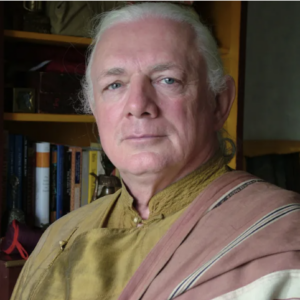
Paperback | eBook
$39.95 - Paperback
This work has three main sections: an overview of Mahamudra, the First Panchen’s text The Main Road of the Triumphant Ones, and a commentary by the Dalai Lama. The author contextualizes the selection saying that the tradition of Mahamudra in the Gelug tradition comes through Tsongkhapa.
Other Notable Works Related to Tsongkhapa
Paperback | eBook
$39.95 - Paperback
Tibetan Literature
Studies in Genre
Edited by Jose Cabezon and Roger R. Jackson
Tibetan Literature: Studies in Genre is a collection by leading Tibetologists. The immensity of Tibet's literary heritage, unsurprisingly, is filled with references to Tsongkhapa across a wide range of subjects. Just a sampling of them include: the establishment of the Gelug order; the monastic curriculum; debate manuals; establishment of Ganden; a comparison with Milarepa; the controversies about his views; a classification of his texts; and a lot more.
Paperback | eBook
$29.95 - Paperback
Mind in Tibetan Buddhism
By Lati Rinpoche, Edited and translated by Elizabeth Napper
Mind in Tibetan Buddhism is an oral commentary on Geshe Jampel Sampel's Presentation of Awareness and Knowledge Composite of All the Important Points, Opener of the Eye of New Intelligence. This topic, lorig in Tibetan, was not one on which Tsongkhapa wrote a dedicated text, but he does include it in an introduction to Dharmakirti’s Seven Treatises and one of his sections includes a brief presentation on lorig. Tsongkhapa is brought up throughout this book.
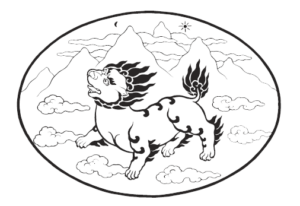
Tsongkhapa is also referenced in about 60 articles on shambhala.com, mostly from the Snow Lion newsletter archive.
Additional Resources


More can be found on Atisha's life on Treasury of Lives
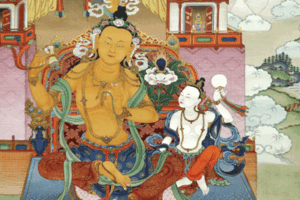
Kalachakra Tantra Reader’s Guide
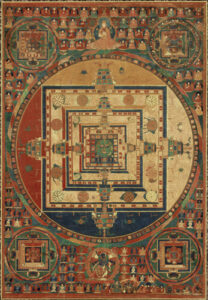
What Is Kalachakra Tantra?
The Kalachakra, or “Wheel of Time,” tantra and cycles of teachings and practices are, on the surface, well known among practitioners and those interested in Tibetan Buddhism. Yet it is considered one of the highest teachings of tantra—a highly complex one where initiates take many years accomplishing the practice. The visualization for an advanced practitioner involves 722 figures in the mandala.
One of the reasons for its notoriety is that His Holiness the Dalai Lama has bestowed the initiation—which takes several days to complete—dozens of times in over ten countries to literally millions of people. For most in attendance it is considered a great blessing and not a springboard into the practice itself. As the Dalai Lama has said:
“The higher meditations of the Kalachakra tradition can be practiced only by a select few. But because of past and future events, and in order to establish a strong karmic relationship with Kalachakra in the minds of the people, there is now a tradition of giving the initiation to large public gatherings.”
Buton’s History of Buddhism in India and Its Spread to Tibet
$34.95 - Hardcover
$39.95 - Paperback
By: H.H. the Fourteenth Dalai Lama & Dilgo Khyentse Rinpoche & Ani Jinba Palmo & Shechen Rabjam
Kalachakra Tantra as a Main Practice
There are many practitioners in the four main Tibetan schools, as well as in the lesser known Jonang tradition, for whom Kalachakra is their main practice, not just a source of connection and blessings. The Gelug and Sakya traditions were heavily influenced by Buton Rinchen Drub. Some of this is detailed in Buton's History of Buddhism in India and Its Spread to Tibet. The Kagyu and Nyingma traditions draw heavily from the Jonang. Some of the more contemporary masters include Jamyang Khyentse Chökyi Lodrö (whose biography was published in early 2017 by Shambhala), Penor Rinpoche, and Dilgo Khyentse Rinpoche. Some of the stories about Khyentse Rinpoche’s connection with the Kalachakra—in particular, the teaching he gave to a large group including His Holiness the Dalai Lama—form a very moving section of his biography, Brilliant Moon. When asked to give a formal elaborate teaching at a Long Life ceremony for the Dalai Lama attended by the heads of all the schools and many other lamas, Tenga Rinpoche relates the following story of Khyentse Rinpoche:
“The next morning when the time came to speak in front of His Holiness the Dalai Lama and the whole assembly of lamas from the four schools of Tibetan Buddhism, speaking for over an hour in an unimpeded flow like a river, Khyentse Rinpoche gave a most detailed and profound explanation of the universe according to the Kalachakra Tantra, in which he mentioned an immense number of quotes, which he obviously seemed to know by heart. At the end of the discourse, he finally approached the throne of His Holiness and offered the mandala plate into His Holiness’s hands. Then he offered the eight auspicious substances, and when offering the conch, a loud thunder crash resounded. This was considered to be a most auspicious event.
Everyone was amazed at Khyentse Rinpoche’s erudition and spoke about his speech for years to come. Afterward I asked him, ‘Did you study the Kalachakra a lot in the past?’ He answered, ‘I didn’t study it much; I read the Kalachakra commentary by Mipham Rinpoche maybe once or twice; that’s all.’”
Coming to the West
The practice’s fame in the West, in particular, is also attributable to the Shambhala teachings introduced widely by Chögyam Trungpa Rinpoche. The Shambhala teachings have a strong connection with the Kalachakra tantra as many of the works below detail. In Recalling Chögyam Trungpa, Khenchen Thrangu Rinpoche explains it in this way:
“You find the teachings on Shambhala in the Outer Kalachakra; it is a branch or section of the Outer Kalachakra. The Outer Kalachakra is also concerned with predicting what good things are going to happen and what bad things are going to happen through an examination of the planets, the lunar mansions, and so on. It includes a description of the physical nature of the world and how the world was formed, and also discusses how the dharma will prosper in the future. So the connection between the Shambhala teachings and the Vajrayana teachings is found in the Outer Kalachakra. There, the text describes how there were the seven dharmarajas, the dharma kings.”
Below you will find a guide to the many works related to Kalachakra that Shambhala and Snow Lion publish.
A Traditional Account of Shambhala for Modern Times
With the release of The Realm of Shambhala, we finally have a complete explanation of Shambhala that is at once traditional—from the Kalachakra or Wheel of Time tantra–but completely applicable to all of us today. Presenting Shambhala as both a place and, especially, as a state of mind accessible to everyone, Khentrul Rinpoche joins practical teachings with a vision of overcoming the challenges of humans and humanity and achieving perfect peace individually and as a society.
Highest Yoga Tantra: An Introduction to the Esoteric Buddhism of Tibet
In the New Translation schools, it is classified in the Highest Yoga Tantra section of tantra. A comprehensive look at this classification, and one in which the Kalachakra system is compared to the Guhyasamaja, is Daniel Cozort's Highest Yoga Tantra: An Introduction to the Esoteric Buddhism of Tibet. This is a good starting point because most of the extant literature is from the New Translation tradition, in particular the Gelug, which is logical given His Holiness the Dalai Lama’s activity.
Treasures of the Sakya Lineage
Before diving into the works dedicated to this cycle of teachings, there is an excellent overview of the divisions of the tantra in Lama Migmar Tseten’s Treasures of the Sakya Lineage, which is helpful when exploring the works below:
“Kalachakra itself is divided into four types of tantra, giving us an elaborate framework to understand its specifics. First, there is the outer Kalachakra. In large part, these sections are concerned with visualizing and meditating on the Buddha in the form of the meditational deity Kalachakra and chanting his mantra. Second comes the inner Kalachakra, which addresses applying the profound internal meditations on the subtle channels, vital winds, elements, and essential drops that make up the subtle (psychic) body. Third, the secret Kalachakra involves meditating on and within the ultimate meaning of the truth of emptiness. Fourth is “other,” or “alternative,” Kalachakra, which relates to the study of and meditation on the outer cosmos of our realm of existence. Alternative Kalachakra teaches us how all the physical appearances of this world are the manifestation of our collective karma; it teaches us the causes that bring about this universe. It describes the outer universe and how it directly corresponds with and reflects the inner propensities and karmic vision of all the beings within this universe. Thus, the Kalachakra tantra contains the deepest meanings of four types of tantras all within a single tradition.”
$29.95 - Paperback
By: John Newman & Roger R. Jackson & Geshe Lhundub Sopa & Beth Simon
The Wheel of Time
An excellent starting point for diving in is The Wheel of Time: Kalachakra in Context. Here His Holiness the Dalai Lama, Geshe Sopa, and scholars Roger Jackson and John Newman explore the history, initiation, and practices within this tantric system.
Another overview is The Wheel of Time Sand Mandala: Visual Scripture of Tibetan Buddhism. This volume comes packed with illustrations that give a helpful sense of how the mandala support for this practice is created.
Introduction to the Kalachakra Initiation
For the initiation of the deity Kalachakra, Alexander Berzin’s Introduction to the Kalachakra Initiation is an excellent starting point. Dr. Berzin has researched and written extensively on the subject and this encapsulates his work. It begins with an introduction to tantra generally, the Kalachakra specifically, and then dives deeper and details the initiation itself, what is happening each day. A brief summary of the purpose of the practice is included:
“Properly empowered, we engage in generation and then complete stage meditational practice in the form of the Buddha-figure called Kalachakra. Through these two stages, we access and utilize the subtlest level of our mind to see reality. Remaining continually focused on reality with it eliminates forever confusion and its instincts, thus bringing liberation from the external and internal cycles of time. This is possible because our basis tantra, our individual clear light mind, underlies each moment of experience and, like time, it has no end. Once our subtlest mind is freed from the deepest cause giving rise to the impulses of energy that perpetuate cycles of time and bondage to them, it gives rise, instead, to the bodies of a Buddha, in the form of Kalachakra.”
It includes an explanation of the understanding of the universe and how it differs from the more familiar Buddhist view of the universe. An excerpt appeared in the Snow Lion newsletter, and you can find it here. This work also includes other aspects of the text such as why it is so closely related with the line of Dalai Lamas, its connection with Shambhala, and more.
Dr. Berzin also published the short Kalachakra and Other Six-Session Yoga Texts, which currently available as an eBook.
The Practice of Kalachakra
Another topical work on the tantra is Glenn Mullin’s The Practice of Kalachakra. The first half serves as a comprehensive overview of the tantra and the Kalachakra. The second half includes a set of translations of teachings and practices related to this cycle from the First, Fifth, Thirteenth, and present Fourteenth Dalai Lamas. It also includes works from Buton, the First Panchen Lama, and Lobzang Thubten Chokyi Nyima.
Some of these are also included in From the Heart of Chenrezig: The Dalai Lamas on Tantra.
$39.95 - Paperback
By: Alexander Berzin & Edward A. Arnold & Thupten Jinpa & Edward Henning
As Long as Space Endures: Essays on the Kalachakra Tantra in Honor of H.H. the Dalai Lama
A very important work in English on the Kalachakra system is the anthology As Long as Space Endures: Essays on the Kalachakra Tantra in Honor of H.H. the Dalai Lama. With two dozen translations and essays, this contains pieces by Robert Thurman, Thupten Jinpa, Alexander Berzin, Vesna Wallace, and many other scholars and lamas known for their work with these teachings.
There are several other works that include teachings, stories, and other helpful and fascinating information on the Kalachakra and its history and impact in India and Tibet..
The Treasury of Knowledge: Book Six, Part Four
$35.95 - Hardcover
By: Elio Guarisco & Ingrid Loken McLeod & Jamgon Kongtrul Lodro Taye
The Treasury of Knowledge: Book Eight, Part Three
$44.95 - Hardcover
By: Elio Guarisco & Ingrid Loken McLeod & Jamgon Kongtrul Lodro Taye
A Gem of Many Colors & The Treasury of Knowledge
Jamgon Kongtrul Lodro Thaye taught extensively on the subject. He talks about this repeatedly throughout his autobiography, A Gem of Many Colors.
He also wrote about it extensively in his Treasuries. There will be a Kalachakra volume in the Treasury of Precious Instructions, the massive multivolume work from Shambhala Publications.
In his The Treasury of Knowledge, published in English in ten volumes, there are two volumes specifically that contain a lot of detail about the Kalachakra system. The first is in the volume Systems of Buddhist Tantra: The Indestructible Way of Secret Mantra (6.4) and the other is in The Elements of Tantric Practice (8.3).
The Buddha from Dolpo & Mountain Doctrine
The Kalachakra is very central to the Jonang tradition, and a figure who is obviously very prominent in the teachings and propagation of the Kalachakra system was Dolpopa.
Dolpopa’s biography, The Buddha from Dolpo by Cyrus Stearns, contains an immense amount of information on Dolpopa's connection with the Kalachakra practice.
Astrological & Divination in Tibet
The Kalachakra system also forms a large part of the astrological and divination techniques in Tibet. A few important sources on this include Mipham Rinpoche's Mo: Tibetan Divination System, and Phillipe Cornu's classic Tibetan Astrology.
The Art of Buddhism
Finally, The Art of Buddhism contains a short section on the Kalachakra mandala and the image above is from that work.
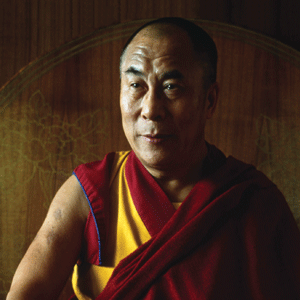
His Holiness the Dalai Lama: A Guide for Readers

See also: Tsongkhapa: A Guide to His Life and Works | Kalachakra Tantra Reader Guide |
Works by the Dalai Lamas | Readers Guide to His Holiness the Fourteenth Dalai Lama
Other Tibetan Buddhist Traditions: Bön | Gelug | Jonang | Kalachakra | Kagyu | Kadam | Nyingma | Sakya | Zhije & Chöd
DALAI LAMA TITLES
About His Holliness the 14th Dalai Lama
For this latest installment of our Great Masters series, we turn to a contemporary master, His Holiness the Fourteenth Dalai Lama, often referred to by Tibetans as Gyalwa Rinpoche or Kundun. As with previous posts, this is not intended to be a complete biography but rather a look at His Holiness's teachings through the lens of his books, mostly the two dozen books published by us, though a few others are also included here. For those looking for more in-depth a biography, His Holiness's autobiography, Freedom in Exile, is an excellent starting point.
While His Holiness is not formally the head of Tibetan Buddhism (there never was one) nor even of the Gelug tradition (that title belongs to the head of Ganden Monastery, the Ganden Tripa), he is regarded as the figurehead and ambassador of Tibetan Buddhism and the Tibetan people. Considered the emanation of Avalokiteshvara, he is beloved by practitioners of all the Tibetan traditions. He has taken initiations and teachings from the many branches of the Tibetan Buddhist tree and has worked tirelessly to preserve the rich set of lineages. Most importantly, His Holiness is a living example of the Buddha's teaching that through study and practice, we can all embody the sublime qualities that are to be cultivated on the path.
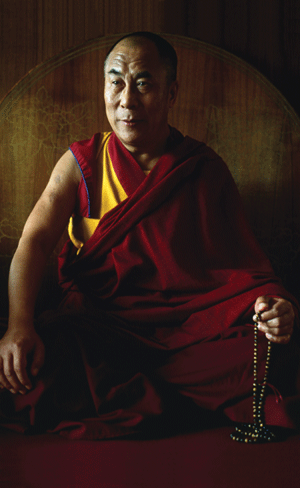
About the Dalai Lama's Books
His Holiness's books in English fall into two general categories: books for general readers who may be interested in what Buddhism has to say about contemporary issues like ethics, science, how the mind works, the environment, etc., and secondly, books specifically for Buddhists on the path. This latter category can be further broken down into overviews of the Buddhist path; the bodhisattva path of the Mahayana; Tantra; and finally Dzogchen and Mahamudra
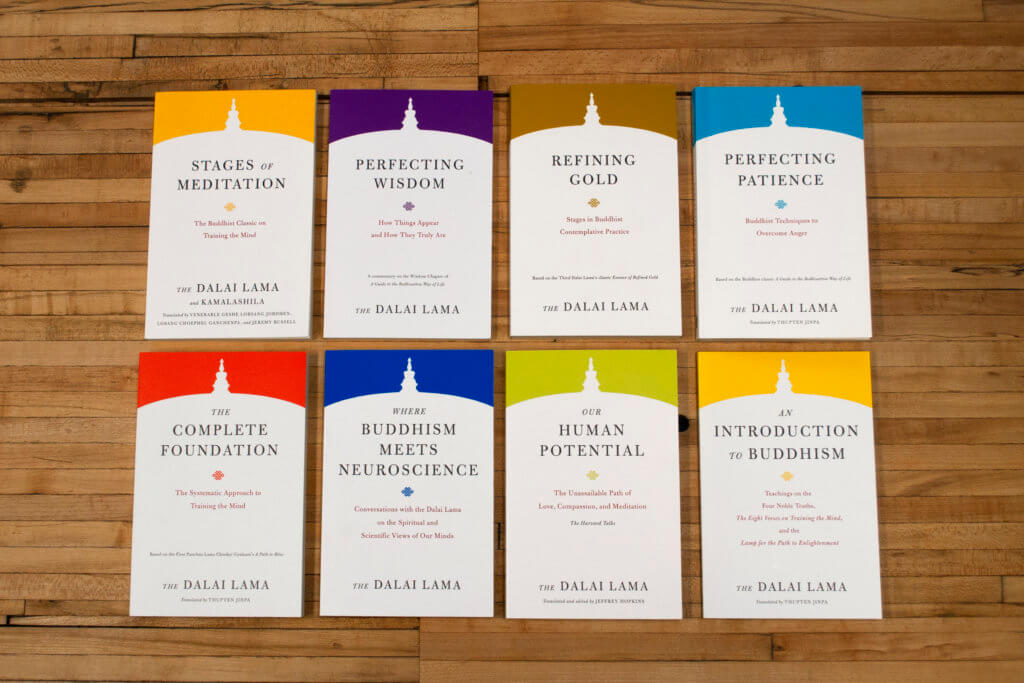
For General Readers
The Pocket Dalai Lama, which can fit in a shirt pocket, is a sampler of His Holiness's writings across the many more secular topics he often addresses to broader audiences, including religion, happiness, democracy and human rights, forgiveness, nonviolence, and world peace.
Policy of Kindness: An Anthology of Writings by and about the Dalai Lama, published shortly after he was awarded the Nobel Peace Prize, is an introduction to his background and daily life and his views and teachings. Currently available only as an eBook.
Paperback $12.95 - Paperback
One of the most influential Buddhist leaders of our time, His Holiness the Fourteenth Dalai Lama is a Nobel Peace Laureate and the exiled spiritual head of the Tibetan people. A tireless teacher and writer, he is the author of dozens of widely acclaimed works, including The Art of Happiness and The Heart of Meditation—and this compact collection brings together a selection of inspiring short teachings from many of his popular books. Addressing a broad range of subjects, such as nonviolence, impermanence, religion, politics, and human rights, these wise words show the power of goodness even in the most uncertain of times.
A Future We Can Love: How We Can Reverse the Climate Crisis with the Power of Our Hearts and Minds
While A Future We Can Love is not authored by His Holiness, it is based on a conversation between he and Greta Thunberg. He appears throughout the book, and the audiobook includes him speaking passages that are quoted at length in the book.
A Future We Can Love shares the words of these two great figures, generations apart, bringing them into dialogue with cutting-edge climate scientists, activists, and spiritual leaders to start a world-changing conversation. Listeners embark on a four-part journey toward active hope in the face of the climate crisis: from knowledge of climate science through the capacity for change, to the will that is needed and the actions we can take.
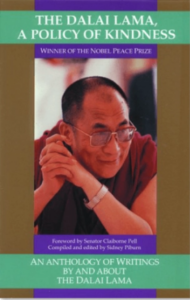
This book offers a comprehensive view of the Dalai Lama—both his personal life and his thoughts on issues of global concern. It provides an engaging picture of a man whose goodwill, understanding, and practicality have brought him respect from world leaders and the acclaim of millions around the world.
Conversations with the Dalai Lama on Science and Buddhist Fundamentals
The following titles are more specific on what the teachings of the Buddha and his spiritual heirs offer to humanity.
Where Buddhism Meets Neuroscience (previously published as Consciousness at the Crossroads: Conversations with the Dalai Lama on Brain Science and Buddhism) records the Dalai Lama's conversations with many leading scientists who specialize in how the brain works. The Western approach of the scientific method meets the Buddhist approach of the science of experience. Questions of perception, dualism, categories of consciousness, memory, dreams, the nature of mental illness, and the mind during and after death are all explored. Discussing the difference between the brain and the mind, he states,
"Generally speaking, awareness, in the sense of our familiar, day-to-day mental processes, does not exist apart from or independent from the brain, according to the Buddhist view. But Buddhism holds that the cause of awareness is to be found in a preceding continuum of awareness from one life to another. Whence does this awareness arise initially? It must arise fundamentally not from a physical base but from a preceding continuum of awareness. "
In Answers: Discussions with Western Buddhists, His Holiness responds to a wide range of questions (from Western non-Buddhists as well!), on topics such as the idea of a creator god, how to reconcile Western physics and Buddhist teachings, Buddhism's essence versus its cultural forms, vipassana in sutra and tantra, tantric meditation, and guru devotion.
Kindness, Clarity, and Insight, one of the most widely read of His Holiness's books, includes a series of talks covering the fundamentals of Buddhism (the four noble truths, karma, the six perfections) as well as topics appropriate for a general audience, like religious values, compassion in global politics, and religious harmony. On this latter topic, he says,
"Philosophical teachings are not the end, not the aim, not what you serve. The aim is to help and benefit others. . . . If we go into the differences in philosophy and argue with and criticize each other, it is useless. . . . Better to look at the purpose of the philosophies and to see what is shared-an emphasis on love, compassion, and respect for a higher force."
Paperback | eBook $18.95 - Paperback
Is the mind an ephemeral side effect of the brain’s physical processes? Are there forms of consciousness so subtle that science has not yet identified them? How does consciousness happen? Organized by the Mind and Life Institute, this discussion addresses some of the most troublesome questions that have driven a wedge between Western science and religion. Read More
Paperback | eBook $18.95 - Paperback
Answers: Discussions with Western Buddhists
In India, at the place where the Buddha attained enlightenment, it became a well-established tradition for the Dalai Lama to spend several days each year giving teachings to Buddhists from all over the world. Following his teachings, he held informal group discussions with Western students of Buddhism. In these lively exchanges, the Dalai Lama exhibits clear and penetrating insight into issues that are most important to Western students. Read More
$16.95 - Paperback
Kindness, Clarity, and Insight: The Fundamentals of Buddhist Thought and Practice
This beloved classic brings together in one volume all the major themes of the Dalai Lama’s teachings. Drawn from the lectures he gave during his first three visits to North America, the book covers the core subject matter of Tibetan Buddhism, as presented for the first time to an English-speaking audience. The chapters are arranged developmentally from simple to complex topics, which include the luminous nature of the mind, the four noble truths, karma, the common goals of the world’s religions, meditation, deities, and selflessness. Read More
In the groundbreaking Healing Emotions: Conversations with the Dalai Lama on Mindfulness, Emotions, and Health, the Dalai Lama discusses this range of topics with Daniel Goleman, Jon Kabat-Zin, Sharon Salzberg, and many leading scientists.
His Holiness' further ideas about the intersection of Buddhism and science, and how the former can inform the latter are captured in Gentle Bridges: Conversations with the Dalai Lama on the Sciences of Mind.
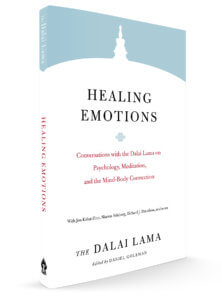
$19.95 - Paperback
Can the mind heal the body? The Buddhist tradition says yes—and now many Western scientists are beginning to agree. These discussions between the Dalai Lama and this group of prominent physicians, psychologists, philosophers, and behaviorists shed new light on the mind-body connection. Read More
$17.95 - Paperback
Gentle Bridges: Conversations with the Dalai Lama on the Sciences of Mind
What is the essence of the mind? Could computers ever have consciousness? Can compassion be learned? When does consciousness enter the human embryo? These are just some of the many questions that were discussed during a historic meeting that took place between several prominent Western scientists and the Dalai Lama. Gentle Bridges is a chronicle of this extraordinary exchange of ideas. Read More
Books for Buddhists
For Buddhists, His Holiness's books fall roughly under the following categories (click to jump to each one): overviews of the Buddhist path; the Great Vehicle of the Mahayana; Tantra; Dzogchen and Mahamudra.
Lam Rim (Stages of the Path)
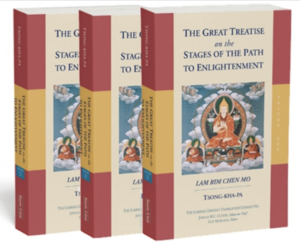
Several of His Holiness's books fall specifically under the category of Lam Rim teachings, or graduated stages of the path to enlightenment. Lam Rim teachings combine all the core practices of the Hinayana, Mahayana, and Vajrayana Buddhist traditions as taught in unbroken succession from the Buddha down to today. The Lam Rim teachings are a corpus of teachings that began with Atisha's The Lamp for the Path to Enlightenment, which is itself based on the Maitreya/Asanga text the Abhisamayalamkara, or Ornament of Clear Realization, on which there is a rich body of literature in Tibetan. What many consider the most detailed of Lam Rim teachings is Tsongkhapa's Great Treatise on the Stages of the Path to Enlightenment.
$34.95 - Paperback
Volume I
This first of three volumes covers all the practices that are prerequisite for developing the spirit of enlightenment (bodhicitta).
$28.95 - Paperback
This second of three volumes covers the deeds of the bodhisattvas, as well as how to train in the six perfections.
$34.95 - Paperback
This third and final volume contains a presentation of the two most important topics in the work: meditative serenity (śamatha) and supramundane insight into the nature of reality (vipaśyanā).
Refining Gold: Stages in Buddhist Contemplative Practice (previously published as The Path to Enlightenment) is His Holiness's section-by-section commentary on The Essence of Refined Gold, penned by the Third Dalai Lama, Sonam Gyatso, which itself is a distillation of Tsongkhapa's Great Treatise. As with other Lam Rim texts, it covers the entire path, and while Lam Rim is typically considered specific to the Gelug tradition, as His Holiness says, "in that its source is none other than the doctrines of the Buddha as gathered and clarified by prophesied Indian masters such as Nagarjuna and Asanga, every Buddhist tradition should be able to see reflections of their own practices through the Lam Rim. "
In The Complete Foundation: The Systematic Approach to Training the Mind (previously published as The Path to Bliss: A Practical Guide to Stages of Meditation), His Holiness presents the Lam Rim of the Fourth Panchen Lama, Lobsang Chokyi Gyaltsen, entitled The Path to Bliss Leading to Omniscience. He gives the origin of Lam Rim teachings and then goes into the preliminary practices followed by the main meditation practices of the Lam Rim.
Another recent book on Lam Rim is From Here to Enlightenment: An Introduction to Tsong-kha-pa's Classic Text The Great Treatise on the Stages of the Path to Enlightenment. This is a concise distillation of the entire work and a great starting point. There is a very moving, short video of His Holiness explaining how precious Tsongkhapa's text is to him. This is a great way to approach this classic text, and His Holiness makes it very accessible.
$17.95 - Paperback
Refining Gold: Stages in Buddhist Contemplative Practice
In this extensive teaching, the Dalai Lama beautifully elucidates the meaning of the path to enlightenment through his own direct spiritual advice and personal reflections. Based on a very famous Tibetan text, this teaching presents in practical terms the essential instructions for the attainment of enlightenment. Its direct approach and lucid style make Refining Gold one of the most accessible introductions to Tibetan Buddhism ever published. Read More
$22.95 - Paperback
The Complete Foundation: A Systematic Approach to Training the Mind
Clear, eloquent, simple, and profound, His Holiness’s teachings are easily accessible to beginning practitioners yet richly nourishing to those more advanced in practice. In The Complete Foundation, the Dalai Lama shows how visualization, reason, and contemplation can be systematically crafted to enhance personal development. Beginning with practices designed to create an effective mental outlook, His Holiness skillfully guides the student to more advanced techniques for developing the mind’s deepest potential and happiness. Read More
$19.95 - Paperback
When the Dalai Lama was forced into exile in 1959, he could take only a few items with him. Among these cherished belongings was his copy of Tsong-kha-pa’s classic text The Great Treatise on the Stages of the Path to Enlightenment. This text distills all the essential points of Tibetan Buddhism, clearly unfolding the entire Buddhist path. Read More
Multi-Theme Works
The Buddhism of Tibet begins with a concise overview of the entire Tibetan Buddhist path from sutra to tantra. This is followed by a translation of His Holiness's text explicating the meaning of emptiness entitled The Key to the Middle Way. Supplementing these two sections is a translation of Nagarjuna's Precious Garland-a text also published as a book by Snow Lion under the same title with more extensive background and including the Tibetan-and finally the Seventh Dalai Lama's The Song of the Four Mindfulnesses, a short poem encapsulating the essentials of both sutra and tantra.
While addressing a Western audience, the lectures contained in Our Human Potential: The Unassailable Path of Love, Compassion, and Meditation (previously published as The Dalai Lama at Harvard) go deep into the fundamental teachings of Buddhism and its philosophy. He presents the ground of the path, covering topics such as the condition of cyclic existence, karma, emptiness, and the meditation techniques for liberation, but then he bridges these topics to the universal ideals of altruism, love for enemies, and wisdom.
Perfecting Patience: Buddhist Techniques to Overcome Anger (previously published as Healing Anger) covers the whole Buddhist path but focuses on the specific topic of overcoming the powerful emotion of anger by cultivating patience as prescribed in Shantideva's classic text, The Way of the Bodhisattva.
$22.95 - Paperback
Unlike most books by the Dalai Lama which are edited compilations of talks that he has given, this book consists of two texts that he himself wrote and two that he chose—all especially aimed at helping Western readers become better grounded in Buddhism. He wrote "The Buddhism of Tibet" and "The Key to the Middle Way" sections to explain the principal topics and central practices of Buddhism. Read More
$19.95 - Paperback
(previously published under the title The Dalai Lama at Harvard)
When His Holiness the Dalai Lama gave a series of lectures at Harvard University, they fulfilled magnificently his intention of providing an in-depth introduction to Buddhist theory and practice. He structured the presentation according to the teachings of the Four Noble Truths and expanded their meaning to cover most of the topics of Tibetan Buddhism. Read More
$18.95 - Paperback
Perfecting Patience: Buddhist Techniques to Overcome Anger
All of the world’s major religions emphasize the importance of love, compassion, and tolerance. This is particularly true in the Buddhist traditions, which unanimously state that compassion and love are the foundation of all paths of practice. To cultivate the potential for compassion and love inherent within us, it is crucial to counteract their opposing forces of anger and hatred. In Perfecting Patience, the Dalai Lama shows how, through the practice of patience and tolerance, we can overcome the obstacles of anger and hatred. Read More
In the first half of An Introduction to Buddhism(previously published as Lighting the Way), His Holiness covers the Four Noble Truths and mind training, or lojong, as laid out by Kadampa master Langri Tangpa. The second half is devoted to a commentary on Atisha's Lamp for the Path to Enlightenment, the source text upon which the Lam Rim, or graduated stages of the path, is based. A longer commentary on this text by the late Geshe Sonam Rinchen is also available.
An Introduction to Buddhism is also is available as an audiobook:
$16.95 - Paperback
Mahayana
While many of the books above also include presentations of the Mahayana, the following are deep dives into some of the most important Mahayana texts and ones His Holiness has returned to many times in his teachings around the world.
His Holiness has frequently taught on Shantideva's Bodhicaryavatara, or Way of the Bodhisattva, sometimes translated as Guide to the Bodhisattva's Way of Life, considered one of the most important texts of the Mahayana canon. The Dalai Lama said that Shantideva "turned his own weapons upon himself, doing battle with his negative emotions. Therefore, when we teach or listen to this text, it is important that we do so in order to progress spiritually, rather than making it simply a subject of academic study. " Having received the transmission of this text from Khunu Rinpoche, who received it from Patrul Rinpoche (whose teachings on the text were said to be accompanied by auspicious signs like the blossoming of flowers with an incredible number of petals), His Holiness has prized this text and taught it widely.
In For the Benefit of All Beings, translated by the Padmakara Translation Group, who also translated one of the most popular versions of the Way of the Bodhisattva, His Holiness gives an overview and commentary on each chapter of the text, distilling the key messages on the benefits of bodhichitta, offering and purification, carefulness, attentiveness, patience, endeavor, concentration, wisdom, and dedication.
This is also available in our Pocket Series as The Bodhisattva Guide and as an audio download.
$21.95 - Paperback
For the Benefit of All Beings: A Commentary on The Way of the Bodhisattva
The fourteenth Dalai Lama, a living embodiment of the bodhisattva ideal, presents here detailed practical guidance based on sections of The Way of the Bodhisattva by Shantideva, the best-known text of Mahayana Buddhism. The Dalai Lama explains this classic and beloved work, showing how anyone can develop a truly "good heart" and the aspiration for the enlightenment of all beings. Read More
$12.95 - Paperback
One of the most beloved of all Buddhist texts, The Way of the Bodhisattva is a practical guide to generating the qualities of love, compassion, generosity, and patience. In this commentary on key sections of the text, the Dalai Lama shows how any of us can develop a truly “good heart,” and why aspiring toward the happiness and enlightenment of others is central to any genuinely spiritual path. Read More
*Note: This is the small format edition of For the Benefit of Beings
$16.95 - Paperback
The ninth chapter or "Wisdom Chapter" of the Bodhicaryavatara, is considered one of the most profound and requires deep study and practice to truly understand. In Perfecting Wisdom: How Things Appear and How They Truly Are (previously published as Transcendent Wisdom), the focus is this chapter. Here His Holiness goes deep into the subjects of the methods needed to cultivate wisdom, what identity-less-ness means, and how the notion of true existence is refuted.
Another set of texts His Holiness has taught on are the so-called Bhavanakrama ( "Stages of Meditation ") texts of Kamalashila, who composed three versions of this text in Tibet. In Stages of Meditation: The Buddhist Classic on Training the Mind, the Dalai Lama gives the fundamental teachings on how to meditate, based on the middle-length version of these texts. He also relates very moving circumstances about how he came to receive the transmission of this text from the Sakya abbot Sangye Tenzin in Bodhgaya.
On a related note, another text His Holiness frequently teaches on is the Eight Verses for Training the Mind, written by Langri Tangpa. The most common teachings on lojong, or mind training, are the Seven-Point Mind Training, by Chekawa Yeshe Dorje. Both of these texts derive from the teaching of Atisha Dipankara Shrijnana, the great Bengali master who went to Tibet and reinvigorated the traditions there. Atisha's famous Bodhipathiapradipa or A Lamp for the Path to Enlightenment is discussed above.
$19.95 - Paperback
Tantra
In the foreword to The Practice of Kalachakra, the Dalai Lama explains the importance of tantra:
"Tantric practice is more powerful than the general sutra trainings for a number of reasons. One of these is that it fully integrates the factors of method and wisdom. In the sutra path one meditates on emptiness, or the non-inherent existence of phenomena, within the framework of the compassionate aspiration to highest enlightenment. Meditation on emptiness is the factor of wisdom, and the bodhisattva aspiration is method. However, in the sutra path these two cannot be generated simultaneously within one moment's consciousness by a practitioner on ordinary levels. In the tantric path, as method one generates the mandala and deities, and then focuses on their empty nature. In this way method and wisdom arise simultaneously in the entity of one mind."
While traditionally works on this subject were kept secret and not distributed widely, the fact that there has been so much misunderstanding and misappropriation of tantra and its methods made the Dalai Lama felt that "translating and distributing an authoritative book may help to clear away the false superimpositions." The books resulting from this wish are below.
$19.95 - Paperback
A key element in tantric practice is guru yoga, as it acts as a foundation upon which the rest of the tantric framework is built. In The Union of Bliss and Emptiness: Teachings on the Practice of Guru Yoga, the Dalai Lama explains this practice, using the Lama Chopa of Lobsang Chokyi Gyalsten, the Fourth Panchen Lama, as the vehicle.
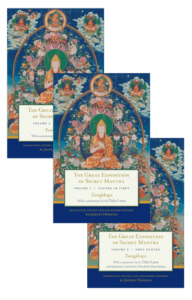
There are three books by His Holiness that form a series focused on Tsongkhapa's Great Exposition of Secret Mantra, sometimes translated as The Great Exposition of Secret Mantra, which, along with his Great Treatise on the Stages of the Path to Enlightenment, is considered by many his most important work. In this text Tsongkhapa presents the differences between sutra and tantra and the main features of various systems of tantra. Each of the three books below begins with the Dalai Lama contextualizing and commenting on the points presented in Tsongkhapa's text, followed by a translation of the corresponding part of the text itself.
In Volume 1, Tantra in Tibet, His Holiness first lays out the foundation of motivation, refuge, and the Hinayana and Mahayana paths. He then gives an overview of tantra, the notion of Clear Light, the greatness of mantra, and initiation or empowerment.
$29.95 - Paperback
Continuing his commentary in Volume II Deity Yoga, His Holiness discusses deity yoga at length with a particular focus on action and performance tantras (the first two categories of tantra as it is described in the sarma, or "new translation " schools).
$29.95 - Paperback
Then in Volume III Yoga Tantra the Dalai Lama details the practice of the next level of tantra, yoga tantra. With a preliminary overview of the motivation, His Holiness explains this level, which focuses on internal yoga, which here means the union of deity yoga with the wisdom of realizing emptiness. He details the yoga, both that with and that without signs, and then briefly explains how gaining stability in these practices is the foundation for some other practices that lead to mundane and extraordinary "feats."
$27.95 - Paperback
An explanation of highest yoga tantra is not included in these works, but an excellent resource is Daniel Cozort's Highest Yoga Tantra.
His Holiness, who has given the Kalachakra empowerment to hundreds of thousands of the devoted in Asia and the West, discusses the practice in From the Heart of Chenrezig, a collection of teachings on Tantra by eight of the Dalai Lamas.
Dzogchen and Mahamudra
Dzogchen and Mahamudra are two related bodies of teachings and practices that are considered by many to be the pinnacle of Vajrayana Buddhism.
$39.95 - Paperback
Mahamudra, or The Great Seal, while often associated in the West with the Kagyu school, has a rich set of traditions in the Sakya and Gelug schools as well. The latter tradition, which has both sutra- and tantra-level teachings on the subject, is revealed in The Gelug/Kagyu Tradition of Mahamudra. This book is based on the text by the First Panchen Lama, Khedrup Je, entitled The Main Road of the Triumphant Ones, which is included in translation. His Holiness presents a commentary both on the root text and Khedrup Je's auto-commentary.
$21.95 - Paperback
The Dalai Lama has received empowerments from all the main Tibetan lineages, including, extensively, that of the Nyingma. He is a student of the late Dilgo Khyentse Rinpoche, who gave him extensive instruction in the practices of Dzogchen, or Great Perfection.
His Holiness has said,
As is said in an oral transmission by the great lama Jamyang Khyentse Chokyi Lodro, when the great Nyingmapa adept Longchen Rabjam gives a presentation of the ground, path, and fruit, he does so mainly from the perspective of the enlightened state of a Buddha, whereas the Sakyapa presentation is mainly from the perspective of the spiritual experience of a yogi on the path, and the Gelukpa presentation is mainly from the perspective of how phenomena appear to ordinary sentient beings. His statement appears to be worthy of considerable reflection; through it many misunderstandings can be removed.
Longchen Rabjam's view is implicitly presented in Dzogchen: The Heart Essence of the Great Perfection, in which His Holiness teaches on Patrul Rinpoche's commentary to Garab Dorje's famous Three Words That Strike the Vital Point, also using other texts such as Longchenpa's Cho Ying Dzod, or Precious Treasury of the Fundamental Nature.
$16.95 - Paperback
His Holiness' latest book, The Heart of Meditation: Discovering Innermost Awareness, he teaches on Dzogchen (rendered by the translator here as the Great Completeness) simply but thoroughly, using as his reference a visionary poem by the nineteenth-century master Patrul Rinpoche to show that insight can never be separated from compassion. Through the practice, we can access our innermost awareness and live our lives in a way that acknowledges it and manifests it. The wisdom and compassion that arise from such insight are critical, His Holiness teaches, not only to individual progress in meditation but to our collective progress toward peace in the world.
We will close this Great Masters post with a quote from His Holiness included in Matthieu Ricard's anthology On the Path to Enlightenment:
"When the teachings say we need to reduce our fascination with the things of this life, it does not mean that we should abandon them completely. It means avoiding the natural tendency to go from elation to depression in reaction to life's ups and downs, jumping for joy when you have some success, or wanting to jump out the window if you do not get what you want. Being less concerned about the affairs of this life means assuming its ups and downs with a broad and stable mind."
Discover More Reader's Guides, Articles, and Resources
SNOW LION NEWSLETTER ARCHIVE
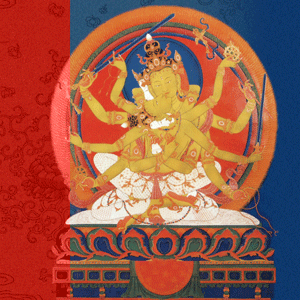
Jeffrey Hopkins on Dealing with Demons
When we do deity yoga we need to be very careful that our unconscious contents don’t arise and mix into the practice or get projected. There could be no better guide through potential pitfalls than Jeffrey Hopkins, perhaps the most widely respected American scholar of Tibetan Buddhism, ex-translator for the Dalai Lama, and author extraordinaire.
Tantric systems often treat as external forces what many other psychologies would consider internal; in Jungian terms, the wisdom behind this tantric externalization is that autonomous complexes are thereby confronted in a manner preventing identification with them and thus being overpowered by them. Also, the contemporary psychological exaggeration in which complexes are considered to be “mine” as if they were somehow within one’s sphere of control becomes impossible. On the negative side, excessive projection onto the environment could lead to misidentifying as external the source of what are actually internal problems with the result that one becomes paranoically concerned with outside forces—be these beings on a different plane or just other people in one’s environment—which are actually projections of one’s own afflictive emotions. Indeed, some practitioners seem caught in a process of external projection that they seek to relieve through the performance of rites. Still, I do not want to fall into the arrogance of the assumption that only projection is involved; I by no means feel justified in assuming that there are not harmful (or helpful) external entities on a subtle level.
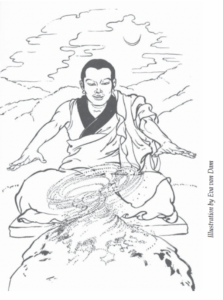
Many of the purificatory steps in Action Tantra are concerned with cleansing the environment and oneself of “obstructors”—these being protection through mantra and seal, self-protection, expelling obstructors in the body, creating vajra armor, dispelling obstructors, removing contamination, again dispelling obstructors, self-protection, and the seven steps of place-protection. The number of times that such rituals are performed suggests that we live in a world bombarded with counterproductive forces, whether their source be external or internal, and that ordinary life is buffeted and swayed by them. When these are understood to include autonomous complexes (as I think they should be), the picture is of a mind subject to a continuous barrage of influences of its own making, much like Freud’s depiction of the unconscious as a seething cauldron of repressed impulses seeking expression, necessary to be held in check, constantly afflicting one’s perceptions and interactions but, for the most part, working unseen havoc. The practitioners themselves, their place of practice, the water with which they bathe, the dirt (like a soap) they use to wash their bodies, their hair, the deity to be invited, and the offerings to be given to the deity are cleansed of the contamination of these forces. At the end of the preparations, all obstructors in the area are bound, and then in what would be redundant were it not for the near uncontrollability of such contents (remember Jung’s reference to their “impishness”), a fence is erected to keep out obstructors. This not being enough, a roof of interlaced vajras is erected on the fence, and a blazing mass of fire outside all of this closes off the area. Now that elements causing interference and interruption have been put at bay, the meditation can begin.
It is said that on the night before the dawn of his enlightenment Shâkyamuni Buddha conquered with the meditative stabilization of love a host of demons, attractive and unattractive, that appeared to him. At this point in tantric meditation, however, a massive defense-structure to keep demons away is erected, albeit within a motivation of love and compassion. Perhaps these defenses are used to create a space in which a basically diseased mind can begin to create positive mental forces, but it is also possible that they are used within a context of projection and denial and are aimed at forestalling recognition of their origin within oneself. It is not difficult to imagine that someone attempting this yoga could become a rather nasty person to live with, constantly projecting inner impulses onto the environment and fighting against others in order to ward off evil forces that actually are that person’s own afflictive emotions. Still, the quasi-otherness with which these forces are treated constitutes recognition that despite the basic Buddhist doctrine that contamination is from within, the extent of this contamination is so great, so difficult to face, so intimately associated with our being and, when it becomes close to consciousness, so liable to overpower the personality, that it is necessary to treat them under the guise of otherness. Jung’s descriptions of the problems attendant upon inflation revealed the enormity of the enterprise of deity yoga; here, from within this traditional system itself, we gain a sense of the condition of the ordinary mind as swamped in a sea of karmically created forces. Again, a picture of the enormity of the task of purification that is at the heart of deity yoga is painted.

Jeffrey Hopkins, PhD, served for a decade as the interpreter for the Dalai Lama. A Buddhist scholar and the author of more than thirty-five books, he is Professor Emeritus at the University of Virginia, where he founded the largest academic program in Tibetan Buddhist studies in the West.
Books by Jeffry Hopkins
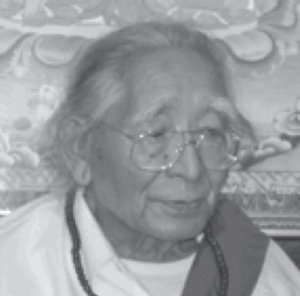
The Ngakpa Tradition: An Interview with Khetsun Sangpo Rinpoche
| The following article is from the Fall, 2006 issue of the Snow Lion Newsletter and is for historical reference only. |
The Ngakpa Tradition
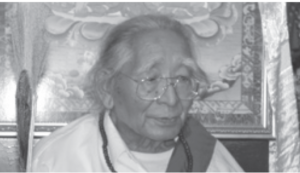
An Interview with Khetsun Sangpo Rinpoche (Khetsün Zangpo Rinpoche)
Jeff Cox: Not many people in the West understand what ngakpas are, though many have seen photos of these long haired, white-robed yogis. Perhaps the one that is best known is the late Yeshe Dorje, who was His Holiness the Dalai Lama’s “weatherman”—that is, he was called on to control the weather for certain occasions. I’d like to understand more about the pure ngakpa tradition.
Khetsun Sangpo Rinpoche: Ngakpas can marry and have families. Their practice is essentially inward and a true spiritual practice.
Q: Is a ngakpa lineage more involved with working with the natural forces, the deities of the weather, the local deities? Do they have a more shamanic tradition?
A: They are engaged in similar rituals and ceremonies as those in the shamanic tradition but there is a distinct difference. This is, for the ngakpa the purpose and final goal is enlightenment in order to liberate others and self. Usually in the shamanic tradition no one talks of enlightenment—it’s only for healings and temporary performance which are maybe only for this life’s well-being. The goal is not as high.
Q: I see. You are saying that ngakpas will do similar kinds of things as shamans but the purpose is for creating better conditions for enlightenment, either mental or physical?
A: Yes. Simply, ngakpas do what they do not only for the present moment’s well-being but also for future enlightenment.
Q: I see. Is there anything else Rinpoche would like to say about the ngakpa tradition?
A: Buddhist monks take pratimoksa vows, of which there are two hundred fifty-three. But ngagpas, with their tantric vows and the samayas [commitments], there are a hundred thousand they have to keep in their mental level. It’s about practice in every single moment to keep all this and not engage in non-virtuous things.
Q: When you say “one hundred thousand vows” it’s like saying that at every moment of your day you have to maintain your awareness. It is not that there really are one hundred thousand.
A: Yes, it’s metaphorical.
Q: To keep the mind pure all the time.
A: Not pure but just aware.
Q: Aware?
A: You need a very high awareness to keep one hundred thousand samayas. So if people are keeping that kind of awareness, even though they appear outwardly as just simple beings they actually are great beings—they are realized or high practitioners.
Otherwise, most people, if they cannot take the ordained vow or keep all the samayas, then they can only make some connection to the Dharma but enlightenment would be very difficult. No matter what you do, if you don’t want to take ordained vows then become a lay practitioner. All you have to do is keep all those samayas well and then you become a true ngagkpa.
Q: Are you saying that tantric practice in the ngakpa way is more strict than that of the average practitioner who does tantric practice?
A: Exactly. On the mental level it is much stricter.
Q: So a practitioner in a Nyingma monastery who has taken pratimoksa vows or whatever and is also a tantric practitioner wouldn’t have the same expectation as a ngakpa tantric practitioner would?
A: Yes, the difference is that if you are a lay person, in order not to break all these vows every moment you need a high awareness. If you stay in a monastery the vows are much easier to keep.
Q: Okay, I guess the question is: if people were serious about practicing, why would they choose to be ngakpas when it may be easier another way? What is it inside one that makes one choose a ngakpa life?
A: Many people begin to follow the ngakpa tradition because to outward appearances the life looks like that of a lay person in which you can engage in everything: you can take a woman or you can drink alcohol. But what they don’t initially know is that there are very subtle restrictions and disciplines or awareness that must come with that. It is even harder than staying in a monastery.
Q: Because the practitioners stay in life, they are transforming the conditions of natural life, not an artificial life, which in a way a monastery is. So if your mind is disciplined enough to maintain inward awareness as you are saying, then the ngakpa way may actually have more power?
A: Yes. If you follow all the tantric samayas, you can recognize all those poisons and you progress much faster and much more powerfully than others, but also it is a very dangerous path if you cannot keep all the samayas. Then broken samaya is even worse and it brings worse results. Being a ngakpa is like being a snake in a bamboo hole—you have to go up or down, there is no side way you can exit. It is much more dangerous and risky. There are only two ways: If you really follow the samaya practice you will gain the fastest result, gain enlightenment and help others, or if you break samaya you go to hell.
Q: So it doesn’t sound like a job everyone would want. Sometimes people choose this path because they are born into a family of ngakpas?
A: Yes that is one reason, and also, what one prefers. Because of one’s physical nature or mental inclination or because one has reached a certain stage to take a consort or whatever.
Loppon (translator): Or if you come from a family of ngakpas—in my hometown, the twenty-five disciples and their descendants in the area kept the dharma in the family. The ngakpas from the family came together in the village and built a temple we call the ngag kang, meaning the ngakpa’s assembly hall.
We didn’t have such formality but because of influence from the monastic tradition we built this temple, gathering on the auspicious days every month to make rituals, and give teachings and empowerments. But this is just a particular family lineage: always the eldest son will become the ngakpa and the rest of the children are sent to the monastery. But of course there are many others not from the family lineage who just want to become ngakpas in order to learn tantra without leaving the social life. There are a lot like that.
Q: The ngakpa path appeals to Westerners but it may not be something that is recommended.
A: No one tells you to become a ngakpa or not; it all depends on your practice. You come to the teaching, you start practice, and slowly progress. When you cultivate your merit, your wisdom is rising and you gain this awareness and then you spontaneously can keep all the practices. Such ones are the true ngakpas, the true practitioner ngakpas. The others are appearance ngakpas, who wear the clothes and leave the hair long. Tibetan lamas are shy to do that in the West but surprisingly many Western students wear these things like yogis.
Q: Yes, these days many Westerners look like ngakpas.
A: Tibetans don’t try to look like ngakpas. That is the difference: If you really follow those samayas you are a great practitioner and nobody can see it from the outside. On the other hand those who cannot follow anything but wear the clothes, it is nothing but costumes and emblems that they hold. Everything goes the opposite way if you really cannot hold the samayas.
KHETSUN RINPOCHE is the author of Fundamental Mind: The Nyingma View of Great Completeness by Mipam-gya-tso, translated and edited by Jeffrey Hopkins, and Tantric Practice in Nyingma, also translated and edited by Jeffrey Hopkins, and co-edited by Anne Klein.
Related Articles and Videos:
Anne Klein Discusses Khetsun Sangpo Rinpoche's Life and Work
The Dudjom Tersar Approach to the Four Thoughts in Ngondro
For more information:
Khetsun Sangpo (1921–2009) was born in central Tibet and worked in a monastery as a servant when he was a boy, learning to read and write during his free hours. He later pursued study for several years with a renowned nun. (It was unusual for a man to seek teachings from a woman.) He eventually pursued formal monastic education in both the Gelukpa and Nyingma traditions. He fled Tibet to India in 1959. He had a close relationship with Dudjom Rinpoche, who asked him to teach in Japan for ten years as his representative. After that period, he spent the rest of his life in India and Nepal.
Related Books
$18.95 - Paperback
By: Jamgon Mipham & Jeffrey Hopkins & Mi-pam-gya-tso & Khetsun Sangpo Rinpoche
$24.95 - Paperback
By: Anne Carolyn Klein & Jeffrey Hopkins & Khetsun Sangpo Rinpoche
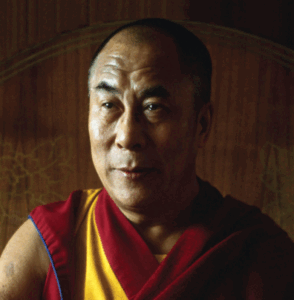
The Dalai Lama's Favorite Meditation
 The Dalai Lama is particularly fond of a meditation that promotes taking responsibility for others’ well-being. Based on A Guide to the Bodhisattva Way of Life by the eighth-century Indian scholar yogi-poet Shantideva, he calls for imagining a three-sided scene. In meditation:
The Dalai Lama is particularly fond of a meditation that promotes taking responsibility for others’ well-being. Based on A Guide to the Bodhisattva Way of Life by the eighth-century Indian scholar yogi-poet Shantideva, he calls for imagining a three-sided scene. In meditation:
1. Imagine that you are your better, more relaxed, confident, and wise
self in the middle looking at two sides in front of you to your left
and right.
2. Then imagine your selfish self on one side: the person who, in a
pushy way, is trying to get an earlier flight, or a piece of cake, or
something like that—this person who’s just thinking of herself or
himself. Remember a recent incident or play-act a convincing
instance of your nasty, cruddy self, thinking, “I, I, I,” not your usual self,
but a nasty, self-serving version.
3. Across from your selfish self imagine a group of destitute persons—
poverty-stricken or in pain.
Thus, in the middle looking at the other two sides is your wise, discriminating self. You look out to one side where your cruddy, selfish self is, utilizing any of a variety of examples:
1. Remember an incident when you were whining in self-pity about your own welfare, putting yourself
totally, unreasonably ahead of everyone else. You were so wound up in your own thing that you
couldn’t notice somebody else’s concern. It’s awful. It’s ugly.
2. Or, remember a situation when you unreasonably carried on, got angry.
3. Or, remember an instance of feeling selfish desire: You’re in a store somewhere, you particularly
want some item, you’re getting overly fascinated with it.
4. Or, remember a time when you were greedily jealous. There’s always someone among your
acquaintances who makes more money for less work.
Then, on the other side, look at the group of destitute people. Sick. Living in poverty. Finding it difficult to get something to eat.
His Holiness asks the level-headed you in the middle to reflect on this fact: “The selfish I on one side and the destitute ones on the other side equally want happiness and don’t want suffering.” And then the question is: Whom will I help? My selfish self, or the destitute people? Just imagine it. As the wise one, you are asking yourself, “Which side am I going to help: the selfish one, groveling after her or his own welfare, or these destitute people?”
The only conclusion is: “There’s only one of me; others are infinite in number, exemplified by five or ten destitute people. How could the welfare of this infinitely larger group not be more important?”
In other circumstances, outside of such a graphic situation, it might seem that, in the abstract, self and other are equal: Self is one and other is one. They’re both singular. But when, aided by this visualization, you actually consider what “other” is, it’s composed of an incredible number of individual selves, individual I’s.
But still, you might consider that, even in this scenario, you assume that the motivations of the “other” side could be just as self-cherishing as your own, and thus you could find no real qualitative difference between self and other. You might then be inclined to help all equally—including your own nasty, self-cherishing self. It strikes me that this is perfectly fine, as long as your nasty self amounts to just one and does not equal “other” in terms of number, who, quantitatively, are hugely different. Thus, if you are considering five people on the “other” side, then you should consider yourself one-sixth, not half.
Or, you might get stuck wondering whether this contemplation calls for helping others and not helping yourself at all. It seems to me that the win-win solution is to put the main emphasis on helping others, making altruism the motivation of self-improvement. What is being targeted here is the feeling of oneself being so exaggeratedly important in the process of becoming happy. Everyone wants happiness and doesn’t want suffering.
Or, you think, “I am more important because I’m figuring this all out, and I’ll be able to pass it on to ones who don’t understand.” I have found it fun to let this type of pride just be, not try to oppose it, but to think, “Even this sense of self-importance is for the sake of others.” Think this over and over again, and pride, which usually serves to hide your inadequacies, disappears. The self-importance becomes hollow and fades. When I was interpreting for the Dalai Lama under the bright lights in front of large crowds, I found the situation brought a huge uplift in concentration—the communication of his message at that point depended on me. I enjoyed the challenge, enjoyed making myself inconspicuous but effective, enjoyed trying to make the task look effortless, enjoyed the open state of mind that I would need for adequate memory when he would talk for five minutes in Tibetan without break, enjoyed the interaction with him when, listening to my English, he would then repeat in Tibetan something I had missed. But I found that after leaving the stage, I longed to be back on it—the lights, the intensity, the attention. I found that it was getting so that I lusted after “the stage.” I recalled stories of actors who could not stand themselves except when onstage and knew I had to figure a way out of this. After a while, this is what came to me: “May these feelings of intensity and so forth go for the benefit of those who are listening.” I thought this over and over, and it worked. I no longer lusted for the situation, but I accomplished this not by forcing myself to not want it, but by realizing that the whole activity was for the sake of others and by deeply feeling this realization in imagination—imagining strength entering into the bodies and minds of the audience. Any type of pride can be handled in the same way.
There are a lot of little things that we can do for others as we go about the day. Provide a cushion for somebody in your meditation group who has difficulty finding a cushion to sit on. Little actions mean a great deal to others. When the Dalai Lama visited the University of British Columbia, he had a meeting with the dean and a group of professors including an aged man who had come in just for this meeting with His Holiness. He was sitting down. When His Holiness entered the room, he tried to get up, although His Holiness was not very near. The fellow, a thin, very old man, was trying to get up to show his respect. All of us saw the great difficulty that he had getting up—such that he might fall down—and we felt in our hearts for him. However, the only one who moved quickly to help him was the Dalai Lama, who took hold of him and helped him up. His Holiness wasn’t so full of himself as to think, “I’m here to receive these people.”
So, it’s the little things that count in valuing others. Making a decision to look to see how we can most effectively help those around us. With such a motivation, your activities have a true importance that is not self-centered. It’s difficult to decide how much to give away, how much time to devote to others, but the basic motivation is clear enough, and it itself, on a day-to-day basis, unties a lot of problems.
From A Truthful Heart: Buddhist Practices for Connecting with Others by Jeffrey Hopkins
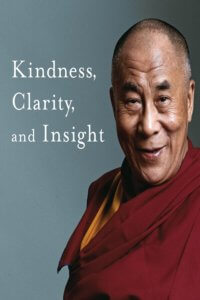

Traditions of Tibetan Buddhism: Bön | Gelug | Jonang | Kadam | Kagyu | Kalachakra | Nyingma | Sakya | Zhije & Chöd | Tibetan Language
See Also: Buddhism | Zen & Chan | Theravada | More in Buddhism | Buddhist Topics | Taoism
| The following article is from the Autumn 2002 Snow Lion Newsletter and is an excerpt from Kindness, Clarity, and Insight by The Fourteenth Dalai Lama His Holiness Tenzin Gyatso, translated and edited by Jeffrey Hopkins, co-edited by Elizabeth Napper. You can see this in context of the original newsletter here. |
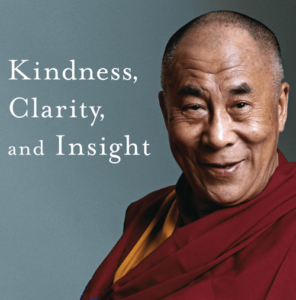
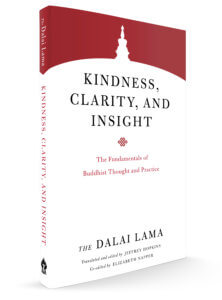
$16.95 - Paperback
A Talk On Om Mani Padme Hum
By His Holiness the Dalai Lama
It is very good to recite the mantra Om mani padme hum,
but while you are doing it,
you should be thinking on its meaning,
for the meaning of the six syllables is great and vast.
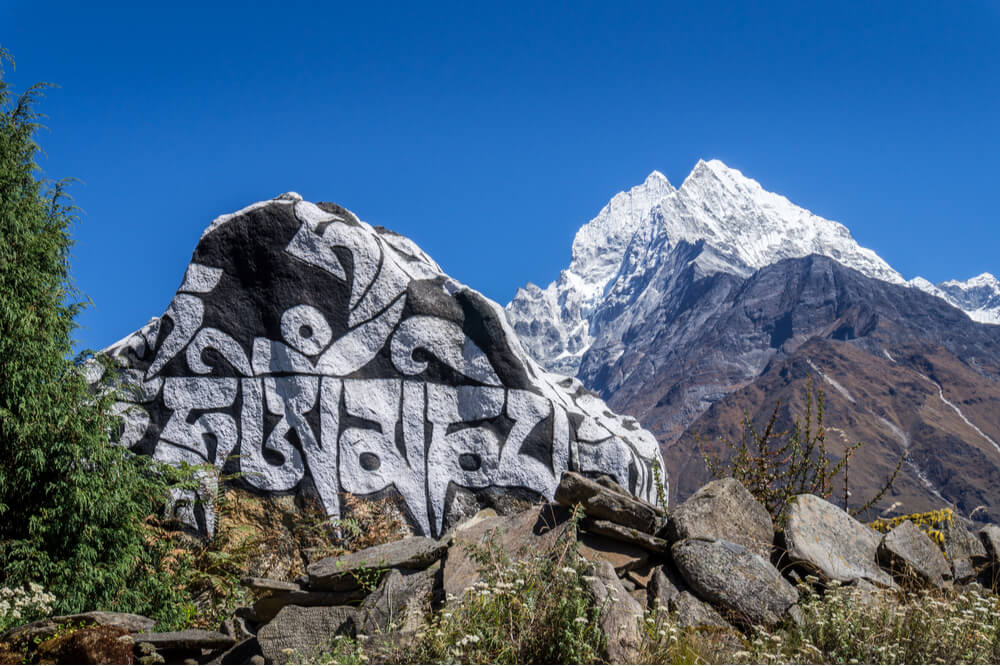
"It is said that you should not seek for Buddhahood outside of yourself; the substances for the achievement of Buddhahood are within."

Om
The first, Om is composed of three letters. A, U, and M. These symbolize the practitioner's impure body, speech, and mind; they also symbolize the pure exalted body, speech, and mind of a Buddha.
Can impure body, speech, and mind be transformed into pure body, speech, and mind, or are they entirely separate?
All Buddhas are cases of beings who were like ourselves and then in dependence on the path became enlightened; Buddhism does not assert that there is anyone who from the beginning is free from faults and possesses all good qualities. The development of pure body, speech, and mind comes from gradually leaving the impure states and their being transformed into the pure.
How is this done?
The path is indicated by the next four syllables.
Mani
Mani, meaning jewel, symbolizes the factors of method—the altruistic intention to become enlightened, compassion, and love.
Just as a jewel is capable of removing poverty, so the altruistic mind of enlightenment is capable of removing the poverty, or difficulties, of cyclic existence and of solitary peace.
Similarly, just as a jewel fulfills the wishes of sentient beings, so the altruistic intention to become enlightened fulfills the wishes of sentient beings.
Padme
The two syllables, padme, meaning lotus, symbolize wisdom, just as a lotus grows forth from mud but is not sullied by the faults of mud, so wisdom is capable of putting you in a situation of non-contradiction whereas there would be contradiction if you did not have wisdom.
There is wisdom realizing impermanence, wisdom realizing that persons are empty of being self-sufficient or substantially existent, wisdom that realizes the emptiness of duality—that is to say, of difference of entity between subject an object—and wisdom that realizes the emptiness of inherent existence.
Though there are many different types of wisdom, the main of all these is the wisdom realizing emptiness.
Hum
Purity must be achieved by an indivisible unity of method and wisdom, symbolized by the final syllable hum, which indicates indivisibility. According to the sutra system, this indivisibility of method and wisdom refers to wisdom affected by method and method affected by wisdom.
In the mantra or tantric, vehicle, it refers to one consciousness in which there is the full form of both wisdom and method as one undifferentiable entity.
In terms of the seed syllables of the five Conqueror Buddhas, hum is the seed syllable of Akshobhya—the immovable, the unfluctuating, that which cannot be disturbed by anything.
Thus the six syllables, om mani padme hum, mean that in dependence on the practice of a path which is an indivisible union of method and wisdom, you can transform your impure body, speech, and mind into the pure exalted body, speech, and mind of a Buddha.
It is said that you should not seek for Buddhahood outside of yourself; the substances for the achievement of Buddhahood are within.
As Maitreya says in his Sublime Continuum of the Great Vehicle (Uttaratantra), all beings naturally have the Buddha nature in their own continuum. We have within us the seed of purity, the essence of a One Gone Thus (Tathagatagarbha), that is to be transformed and fully developed into Buddhahood.
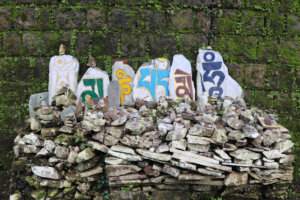
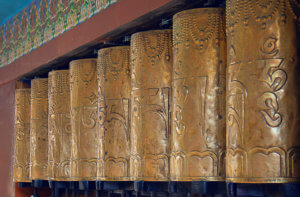

". . . .all beings naturally have the Buddha nature in their own continuum. We have within us the seed of purity..."


Elizabeth S. Napper is an independent scholar who has translated and edited Tibetan Buddhist works. She lives in India.
For more on Om Mani Padme Hum by another great master, see Trinley Norbu Rinpoche's explanation here.

